Banner seeks OK for hospital campus at Scottsdale Airpark
BY J. GRABER Progress Staff Writer






hospital and medical center could become a reality at the northeast corner of Hayden Road and the Loop 101.
Banner Health has submitted a zoning application with the city to build the campus
 BY ALEX GALLAGHER Progress Staff Writer
BY ALEX GALLAGHER Progress Staff Writer
Scottsdale Arts President and CEO





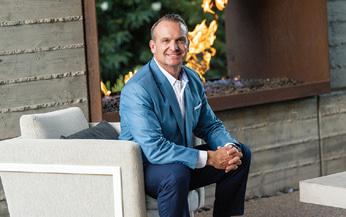
Gerd Wuestemann wants City Council to provide more money to conserve the city’s $200 million collection of pieces of public art.
Scottsdale Public Arts has a over 160 works scattered throughout the city but only has an annual budget of $126,000 to conserve them – which puts Wuestemann and his team in a pinch as they determine what can be maintained any given year.
“One of our great challenges in public

on 48 acres of land in the Scottsdale Airpark. The project will be built in three phases over time that the application said would include – According to the application:
Phase 1. 385,000 square feet of hospital space that would include a five-story, 136bed hospital tower with adjoining two-story diagnostic and treatment building housing emergency, surgical facility, laboratory,

pharmacy, and associated support services. It also would include a three-story, 120,000-square-foot medical office building and a ground-level helipad.
Phase 2. A 90,000 square-foot, threestory cancer center and a four-level parking structure.
Charles Poston Jr., earlier this month marked a significant milestone that not many people ever see – his 101st birthday. The Scottsdale man is proud of his service for the U.S. Navy in World War II and is one of the steadily shrinking number of members of The Greatest Generation. You can read about his life – and his secret to his longevity – on page 36. (David Minton/Progress Staff Photographer)

































Scottsdale
Main
CONTACT
Scottsdale
though it could take two years to get the infrastructure in place.
85282
Publisher Steve T. Strickbine
Vice President Michael Hiatt
ADVERTISING DEPARTMENT
Display Advertising 480-898-6309
Classifieds/Inside Sales
Elaine Cota | 480-898-7926 | ecota@TimesLocalMedia.com
TJ Higgins | 480-898-5902 | tjhiggins@TimesLocalMedia.com
Advertising Office Manager
Trish Simpson | 480-898-6500 | tsimpson@TimesLocalMedia.com
Director of National Advertising
Zac Reynolds | 480-898-5603 | zac@TimesLocalMedia.com
NEWS DEPARTMENT
Executive Editor
Paul Maryniak | 480-898-5647 | pmaryniak@TimesLocalMedia.com
Staff Writers
Alex Gallagher | 843-696-6442 | agallagher@TimesLocalMedia.com
J. Graber | 480-898-5682 | jgraber@TimesLocalMedia.com
Photographers
Dave Minton | dminton@TimesLocalMedia.com
Design Veronica Thurman | vthurman@TimesLocalMedia.com
Production Coordinator
Courtney Oldham | 480-898-5617 | production@TimesLocalMedia.com
Circulation Director
Aaron Kolodny | aaron@Phoenix.org
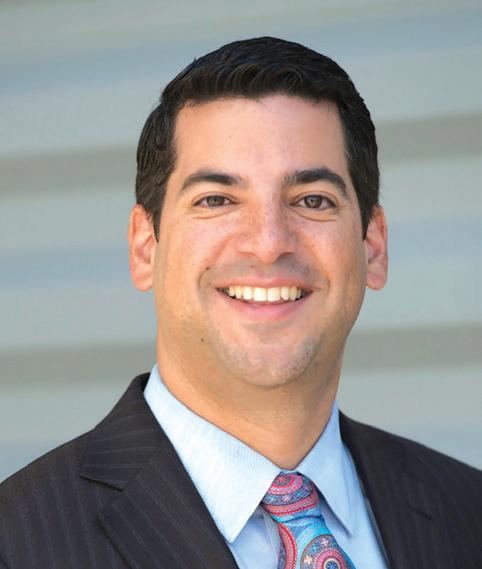
Distribution Manager Brian Juhl | brian@TimesLocalMedia.com
Scottsdale Progress is distributed by AZ Integrated Media, a circulation company owned and operated by Times Media Group. The public is limited to one copy per reader. For circulation services, please contact Aaron Kolodny at aaron@Phoenix.org.
To start or stop delivery of the paper, please visit: https://timespublications.com/phoenix/ or call 480-898-7901
To receive your free online edition subscription, please visit: https://www.scottsdale.org/e-subscribe/
The content of any advertisements are the sole responsibility of the advertiser. Scottsdale Progress assumes no responsibility for the claims of any advertisement.
Strickbine
lawsuit has been filed in the battle to get water to the Rio Verde Foothills community before the City of Scottsdale turns off the tap Jan. 1.
The suit challenges the Maricopa County Board of Supervisors’ unanimous vote last month not to create a domestic water improvement district (DWID).
Homeowners John Jouas and Jamie Philips filed the suit, which says the vote “is contrary to Arizona law, is not supported by substantial evidence, is arbitrary and capricious and an abuse of discretion.”
The two plaintiffs declined to comment on the suit and county officials also had no comment.
Attorney Elizabeth Shaffer, who represents the two homeowners, said her clients have no choice but to appeal the board’s decision because no utility has filed an application to provide water to the community.
“It’s our only option for a water solution,” Shaffer said.
The suit says the supervisor’s action “should be reversed and the petition granted because the board’s decision is not supported by Arizona law.”
It asserts the law requires the supervisors to consider “whether the public convenience, necessity or welfare will be promoted by the establishment of the Rio Verde Foothills domestic water improvement district is required” and that they “did not make any such determination and/or findings.
“Additionally, the board’s decision to dismiss the petition for the establishment of the RVF DWID is not supported by substantial evidence and an abuse of discretion. The RVF DWID is the lowest cost feasible way to get water to the residents of the Rio Verde Foothills.”
This is not the first time the supporters of the DWID have used the courts against the board of supervisors though.
They filed a writ of mandamus against the supervisors in March to try and speed up the decision-making process but the judge dismissed it on April 26.
Epcor, a public water company, has said it will provide a standpipe to permit water hauling in the area to continue –
But Epcor has yet to file an application to do so with the Arizona Corporation Commission.
The fight is rooted in the federal Bureau of Land Management’s rationing of Colorado River water to the seven Basin States and assorted tribes.
That prompted Scottsdale to launch stage one of its Drought Management Plan, which ends water hauling in the Rio Verde Foothills area starting Jan. 1.
About 700 homeowners in the area pay to have a tanker fill up with water from a massive city-owned spigot haul it to their homes for storage. About 500 of those homes rely solely on that water while about 200 more supplement it with their own wells.
The situation is made possible because of “wildcat subdivisions” that do not require lots to have a 100-year water supply before they are developed. State law allows a landowner to split land into as many as five lots without being subject to certain regulations on size, infrastructure and amenities.
Former County Commissioner Steve Chucri in 2014 created a water committee to look into the issue.
In 2016, that committee met with the Arizona Department of Water Resources, which suggested creating a DWID.
Rio Verde homeowners then penned a draft petition to create it in 2019 and submitted it for approval to the county before they could collect signatures. The county finally approved it at the end of 2020 so signatures could start being collected.
Supporters of the DWID have approximately 550 signatures out of a community of about 4,000 parcels.
There is significant opposition to the water district as many homeowners feel it would put too much power into the hands of a few and goes against their rural lifestyle.
A resolution of the dispute came to a halt when Chucri resigned last November and put the matter on hold until he was replaced.
Supervisor Thomas Galvin has been dealing with the situation in Rio Verde Foothills since he was picked to replace Chucri.
Thomas GalvinThe Arizona Corporation Commission waded into the situation in July at Galvin’s invitation.
Commissioner Anna Tovar asked Rio Verde Foothills residents if they would prefer creating a DWID or use a standpipe that would allow water hauling to continue.
“I understand there are several PCSs (public service corporations) near the community that might be interested in providing stand pipe service to Rio Verde (Foothills),” her letter said. “If the majority of the community would like to be served by a standpipe, perhaps one of those PCSs will step forward to assist.”
Galvin held two public input sessions on the subject, including one on Aug. 29.
That was followed two days later by the supervisors’ vote against a water district to allow the DWID to be formed.
Galvin said at the time “a non-contiguous DWID would not represent the entire community” and noted “liens would be placed on a number of properties, subjecting them to substantial obligations and liabilities.”
He also expressed concerns about a water district and its board’s long term viability and said “I’ve not been satisfied that questions regarding the costs have been fully answered.”
“In contrast, a private water utility corporation can address these water needs and has greater support from the community,” he said.

Phase 3. To accommodate anticipated staff and patient volume growth, the final expansion of the hospital would include a new patient tower at the east end of the main building and additions to both the diagnostic and treatment building and parking structure. A secondary roofmounted helipad is also planned for the east-wing patient tower.
“The hospital’s four and five-story patient towers are placed on the south end of the property to provide maximum visibility from the Loop 101 Freeway, while also providing separation from the closest residential neighborhoods that are located approximately a half-mile north of the property,” Banner says in the application.
Primary access to the campus will be off Hayden Road to the west with secondary access points off the Cavasson Boulevard extension to the north.
Landscaping will not include any turf or lawn area and the campus will include outdoor patios and gardens as well as a walking trail throughout the campus, the application states.
Banner did not return calls or emails

from the Progress, but the application states:
“One of the main priorities in designing this campus for wellness and connectivity, is ensuring intuitive way finding and safe, efficient pedestrian paths. An additional priority is to lift the human spirit
and support wellness through both the internal site design, and the orientation to the larger Scottsdale community.
“To achieve these goals, two ‘green’ spines have been established on the campus, one in a north/south direction, and the other in an east/west direction, to
provide connectivity between the buildings and the parking infrastructure, open spaces, and perimeter sidewalks.
“Both spines connect into an overall wellness path that encircles the 48-acre property for a total length of over 1 mile. The walking path may be used for visitors and staff alike and will provide an excellent way of relieving stress.”
Parking will exceed city requirements by about 800 parking spaces and breaks down to four spaces per bed in the tower, four and a half spots per 1,000 square feet of medical office building space and five spots per 1,000 square feet of space in the cancer center.
“The Banner Health medical campus is intended to expand the Banner Health network and serve as a new community healthcare resource for the existing and growing population in north Scottsdale and north Phoenix,” the application states.



The project is contingent upon an Arizona State Land Department Auction on Nov. 16. Banner Health is slated to go before the Scottsdale Planning Commission on Dec. 14.





































































The proposed 48-acre site for the Banner Health hospital campus at Scottsdale Airport is set to be auction by the Arizona Land Department Nov. 16 with a minimum bid of $56.95
maximum allowed building height of a hospital to 94 feet.
The healthcare giant is seeking:


A zoning map amendment to confirm the Arizona State Land Department’s allocation of the commercial office zoning for the property as allowed within the crossroads east planned community district;

A conditional use permit to allow a hospital use with helipads; and
Amendments to the city zoning ordinance to allow for an increase in the



The Land Department auction lists 48 acres with a minimum bid of just under $57 million.
According to an appraisal by Terracon Consultants of Tempe, the site is bordered by native land to the north, a storm water retention basin to the east, Loop 101 to the south. West of the site is N. Hayden Road, followed by a commercial building and two buildings under construction.
AScottsdale legislator who also heads the House Appropriations Committee wants to pull all state funds from Arizona PBS over what he said is the station’s mishandling of the gubernatorial debate.
Republican Rep. John Kavanagh acknowledged that KAET-TV has the right to air what it wants. And that includes what station officials say is its obligation to provide equal time to Democrat Katie Hobbs after Republican Kari Lake was going to get 30 minutes of airtime.
But Kavanagh told Capitol Media Services last week that the station,
which is part of the Cronkite School of Journalism at Arizona State University, has had an ongoing relationship with the Citizens Clean Elections Commission that arranges these debates.


“The rules for years were if a candidate refuses to debate, they don’t get time,’’ he said.
That was the case here, with the commission agreeing to provide a 30-minute interview for Lake with host Ted Simons after Hobbs refused to share the stage.
On Wednesday, though, the station decided on its own it would provide the same opportunity for Hobbs on its nightly Horizon show this coming


















































Mesa, AZ – When it comes to chronic pain and/ or neuropathy, the most common doctor-prescribed treatment is drugs like Gabapentin, Lyrica, Cymbalta, and Neurontin. The problem with antidepressants or anti-seizure medications like these is that they offer purely symptomatic relief, as opposed to targeting and treating the root of the problem. Worse, these drugs often trigger an onset of uncomfortable, painful, and sometimes harmful side effects.
The only way to effectively treat chronic pain and/or peripheral neuropathy is by targeting the source, which is the result of nerve damage owing to inadequate blood flow to the nerves in the hands and feet. This often causes weakness, numbness, balance problems. A lack of nutrients causes the nerves degenerate – an insidious
cannot survive, and thus, slowly die. This leads to those painful and frustrating consequences we were talking about earlier, like weakness, numbness, tingling, balance issues, and perhaps even a burning sensation.
The drugs your doctor might prescribe will temporarily conceal the problems, putting a “Band-Aid” over a situation that will only continue to deteriorate without further action.
Thankfully, Mesa is the birthplace of a brandnew facility that sheds new light on this pressing problem of peripheral neuropathy and chronic pain. The company is trailblazing the medical industry by replacing outdated drugs and symptomatic reprieves with an advanced machine that targets the root of the problem at hand.
1. Finding the underlying cause
2. Determining the extent of the nerve damage (above 95% nerve loss is rarely treatable)
3. The amount of treatment required for the patient’s unique condition
Aspen Medical in Mesa, AZ uses a state-of-the-art electric cell signaling systems worth $100,000.00. Th is ground-breaking treatment is engineered to achieve the following, accompanied by advanced diagnostics and a basic skin biopsy to accurately analyze results:

1. Increases blood flow

2. Stimulates and strengthens small fiber nerves
3. Improves brain-based pain
The treatment works by delivering energy to the affected area(s) at varying wavelengths, from low- to middle-frequency signals, while also using Amplitude Modulated (AM) and Frequency Modulated (FM) signaling
It’s completely painless!
THE GREAT NEWS IS THAT THIS TREATMENT IS COVERED BY MEDICARE, MEDICAID, AND MOST INSURANCES!!
The number of treatments required varies from patient to patient, and can only be determined following an in-depth neurological and vascular examination. As long as you have less than 95% nerve damage, there is hope!
Aspen Medical begins by analyzing the extent of the nerve damage –a complimentary service for your friends and family. Each exam comprises a detailed sensory evaluation, extensive peripheral vascular testing, and comprehensive analysis of neuropathy findings.
Aspen Medical will be offering this free chronic pain and neuropathy severity evaluation will be available until October 31st, 2022. Call (480) 274 3157 to make an appointment.
Due to our very busy office schedule, we are limiting this offer to the first 10 c allers Y OU DO NOT HAVE TO SUFFER ANOTHER MINUTE, CALL (480) 274 3157… NOW!!
We are extremely busy, so we are unavailable, please leave a voice message and we will get back to you as soon as possible.
E Baseline Rd., Suite 119
AZ 85206
As displayed in figure 1 above, the nerves are surrounded by diseased, withered blood vessels. A lack of sufficient nutrients means the nerves
Effective neuropathy treatment relies on the following three factors:
Depending on your coverage, your peripheral neuropathy treatment could cost almost nothing – or be absolutely free.
The Fiesta is a proposed five-star restaurant that would be located in Scottsdale’s entertainment district. (City of Scottsdale)
Board has recommended council approval of what the owner says will be a five-star restaurant called the Fiesta in Scottsdale’s entertainment district near Camelback Road and N. 73rd Street.

The Fiesta, also known as Calle Rosa, is designed as a three-story restaurant and bar on a .37-acre site.
The first level will offer parking for 26 vehicles and a lobby. The second floor would house the restaurant and the third floor would be home to what the developer calls a “speak easy” bar.
The DRB first considered the Fiesta case Aug. 28 but put it on hold to address some issues.
It said the building’s design was flawed, that there were noise abatement issues on the front of the building and a lack of lighting in the back.
The developer addressed the issues, adding lights in the back and conducting a noise study at the Flint restaurant at 24th Street and Camelback Road that he said emits noise similar to what The Fiesta can expect to produce
“The likely overstated projected noise levels are well below the recommended design goal,” the study con-
cluded. “Additionally, the projected noise levels are substantially below the existing average ambient noise level. They are even below the measured minimum ambient noise levels.”
A glass wall outside the restaurant that would mitigate noise was discussed at the earlier meeting but was not included in the application approved last week.
The developer said it was not included because it would not actually mitigate noise.
However, the board unanimously recommended council approve the project with the stipulation that a twofoot glass wall be constructed on the second-floor patio with openings to permit air flow as well as adjustments to the elevator parapet.
Sonny Kirtley, executive director of the Council of Greater Scottsdale asked for a glass sound barrier and canopy on the third floor and that noise-absorbent material be included on the back wall of the bar patio.
None of that was included in the board’s action.
There were also concerns raised about whether the project would be a nightclub instead of a bar or what it could become if the restaurant were sold.
But such issues are outside of the board’s purview.













TheScottsdale Design Review Board
Oct. 6 recommended City Council’s approval of two projects with a total 380 apartments and delayed action on a third with 281 units.
Recommended for approval are the mixed-use Chaparral Commons with 225 apartments and 11,370 square feet of commercial space near the intersection of Scottsdale Road and Gold Dust Avenue and The Miller, which would bring 141 apartments near the intersection of E. 6th Avenue and N. Miller Road.
Citing a need for more work on aesthetics, the board postponed a vote on The Continental, which would have 281 apartments and 10,000 square feet of commercial space near N. Scottsdale Road and E. Continental Drive. Board Chairwoman Solange Whitehead pointed out that the board can’t be involved in zoning issues or whether or not a project can be built but can only weigh in on a project’s aesthetics.

“The members can’t recommend denial
because the proposed use is apartments,” she said, adding it “can recommend denial or stipulate changes to protect road set back standards or because of insufficient landscaping and shade.”
The four-story Continental comprises two buildings separated by a garage on 5 acres and includes a stone and brick veneer to break up the look of the wall.
But some board members criticized aspects of the project’s design.
DRB member Jeffrey Brand said, “These are the types of projects that just scream, ‘This is an apartment project!’ because of the same type of window presentation, the same type of patio slider you’re using on here and then the repeated same materials that make their way across all four sides of
this.”

He also noted, “It just seems completely blank on the west facade.”

Brand and board member Ali Fakih also raised concerns about the opening to the parking lot.
“I don’t know if something could be done to it to make it more inviting,” Fakih said.
The board voted unanimously to send the developer back to work with city staff on some of those problems.
The two other projects passed board review.
Chaparral Commons is planned on 4.64 acres, which gives it a density of 48.5 units per acre.

The project offers one free month of rent to anyone with a child in nearby Chaparral High School and 10% of the units will be reserved for city workforce housing. That controls rent costs without any tax breaks.
The four-story complex has three requests for amended standards. The first amendment would allow the building to be set back more than the minimum.


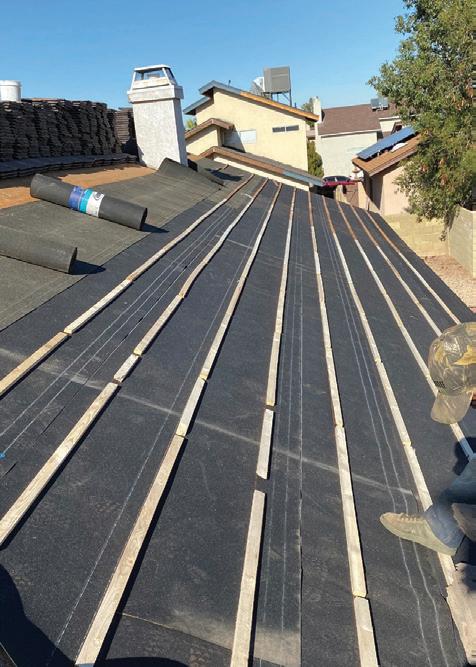


from page 12

John Berry, an attorney for the developer, said the extra space will be used to put in 10-foot wide sidewalks and a double row of trees.
The second amendment request would reduce the slope of the third- and fourthstory stepbacks along the western property line. The final request is for patio/ balcony areas in the setback along the western edge.
Berry also pointed out the original application called for a fourth story along Gold Dust Avenue, but that has been moved away from the street and into the center of the project.
He also said “quality materials” would be used, explaining, “We’ve got tile accents, we’ve got stone and we’ve got these very cool copper downspouts that will actually age and patina over time.”
The project will also eliminate 1.36 acres of asphalt and add 142 trees, including 48-inch box trees.
City staff members received concerns about a “traffic, building heights as well as just generally not wanting more apartments,” but have also received support for the project, said Principal Planner Bryn Cluff.
Area resident Adam Weisman spoke in support the project.
“When I heard about this project, I was excited because that shopping center (where the project is planned) that’s been next to me, I’ve been there for six years and it’s just gone down hill the last few years,” Weisman said.
“Now we have homeless people living in the back, people sleeping in their cars at night in the parking lot itself and it’s not really a pleasant place for me to walk around at night when I walk my dog.”
Jenn McColl, a zoology and botany teacher at Chaparral High, supported the project because the developer would give the school a learning garden.
“My students have this wonderful idea of taking our original (garden) space and transforming it into a shaded space where students can come, they can learn to garden, they can harvest the food, they can relax at lunchtime and they can be with each other,” McColl said.
She also said students “wanted to bring in the life skills students, our special needs students, and teach them how to garden and how to harvest. And we have a culinary program here as well.”
The Miller will boast 141 total units, including eight “workforce housing” units on 1.2 acres.

Staff expressed some concerns about the placement of vents for the underground garage along Sixth Avenue, but walls have been placed around the vents.
Significant landscaping has also been added.
“From a landscape perspective Miller
Road is being enhanced as part of this project with some trees,” Scottsdale Project Coordination Liaison Greg Bloemberg said, adding:
“The thing that really stands out for this particular project is the Sixth Avenue frontage … there will be a detached sidewalk along Sixth Avenue and a double row of trees to provide some shading along that sidewalk so the streetscape is being enhanced, particularly along Sixth Avenue.”
Stair towers for the 76-foot building will provide some variety in terms of color and materials, Bloemberg said.
“From a color and finish perspective, this pallet is relatively consistent with the sensitive design principals in the Old Town design guidelines,” Bloemberg said.
He also pointed out that the building along the Old Town border has no change to the step back requirements.
The board’s approval came with a stipulation that the developer work with staff to change the color of the top level of the building.
Get those walking shoes ready.
Two holiday-related walks/ runs tied to holidays are coming to Scottsdale.
The first is the Trick or Trot next Sunday, Oct. 23, that begins with a 9 a.m. check-in and 9:30 a.m. start at McCormick Ranch Golf Course, 7505 E. McCormick Pkwy., to raise funds for the nonprofit Childhelp.
Presenting sponsor McCarthy also has Wings providing a Zombie Zone where there will be trick or treating, costumes, a DJ, face painting, kids crafts and games, treats and raffle prizes. Register at chldhelp.org/trickortrot.
Meanwhile, registration begins this week for the annual Jingle Hike to Santa Dec. 10 at Pinnacle Peak Park, 26802 N.102nd Way, Scottsdale.
Like the Trick or Trot, this is a familyfriendly event and participants will re-
ceive a bell as they hike to Santa, who will be located at the Grandview Overlook.
Kids are encouraged to bring a wish list and there will be cocoa, coffee and treats as well as face painting and interactive storytelling and crafts.
All activities are free, though strollers and pets are not allowed. Participants must be registered at recreation.scottsdaleaz.gov.
Information: 480-312-0990.

Barto has sponsored Arizona’s most extreme abortion ban laws, and agrees with bans that have no exceptions for rape and incest. (1)
In tough economic times, Barto has cost Arizona taxpayers tens of millions. Between her extreme laws getting the state sued (and the state subsequently losing) and her willingness to spend $9.4 million for a “Cyber Ninja” 2020 election audit, Arizona can’t afford Barto. (2)

Barto supports gun sales without any background checks (3) and has voted to allow adults to carry fully-loaded guns while around children at school. (4)
1)
Marsh has been very public about protecting women’s access to the healthcare they need and will work to keep the government out of the decisions made between a woman and her doctor.
Christine Marsh has worked hard to support Arizona’s economy during this tough time, has supported key investments in Arizona’s infrastructure, and has worked to get our schools the funding they need. She even brought Republicans and Democrats together to fight illegal fentanyl which has torn apart too many Arizona families. (1)
As a mother of a police officer, Marsh supports all measures that will keep our children safe – including prohibiting adults (except for trusted School Resource Officers) from having loaded guns on or near school property.
Back in 2014, the state’s largest electric company put $10.7 million into successful efforts to elect Republicans Tom Forese and Doug Little to the panel that has lifeor-death control of how much it can charge its customers.
Three years later, the Arizona Corporation Commission approved a 4.5% rate hike for Arizona Public Service.
The company didn’t disclose the funding until 2019. And it was able to do that because state laws allows donations to be funneled through other entities to run independent expenditure campaigns for or against candidates, with no requirement for disclosure.
All that would come to an end if voters approve Proposition 211, which is designed to unearth the ultimate source of all campaign dollars.
The measure is drawing fire from
the business-oriented Arizona Free Enterprise Club which contends that this kind of disclosure would lead to harassment of donors.
“They want the names of private citizens so that they can dox, harass and cancel them in their communities,’’ said club President Scot Mussi. “And they intend to use their friends in Big Tech and the Corporate Media (which are exempt from this initiative) to aid them in their quest.
That’s also the conclusion of Cathi Herrod, president of the Center for Arizona Policy.
“This initiative is about bullying some citizens out of campaign involvement,’’ she said. “The desired effect is to scare contributors out of donating to campaigns, while their own donors’ virtue signal by touting their donations to woke causes.’’
But former Attorney General Terry Goddard, who crafted what is known as the Voters’ Right to Know Act, said that ignores existing Arizona law.

“Everybody in Arizona who gives $50 or more has to give a full disclosure,’’ he said, citing statutes which require public disclosure of anyone who makes direct donations to candidates or ballot measures. Goddard said if harassment is an issue, there already would be evidence of a problem.
“What our friends from the Free Enterprise Club are saying is, ‘Well, our friends are special and shouldn’t have to do that,’" he said.
Mussi, however, insists this is different.
“You’re talking about private citizens giving to private organizations,’’ he said. And if that organization does give money to a cause or candidate, that fact is disclosed -- though its original donors or not.
Mussi insisted it’s no different if the “private citizen’’ giving to an organization is a regulated utility which intends for the “private organization’’ to use the funds to affect an election.
Goddard also dismissed the possibility that public disclosure could be used to harass people over their small donations.
“We set the disclosure limit at $5,000,’’ he said.
“People who give $5,000 can take care of themselves,’’ Goddard continued. “I’m sorry, that’s just the way it is.’’

The law applies only to organizations that spend at least $50,000 on statewide campaigns or $25,000 on other campaigns.
He also said there’s a provision in the initiative that allows those who believe they or their family will be physically harmed if a donation becomes public to petition the Citizens Clean Elections Commission to request a waiver.
Then there’s the legal question.
Goddard acknowledged that the U.S. Supreme Court, in the landmark 2010 case of Citizens United, prohibits the government from restricting independent expenditures for political campaigns by corporations, labor unions and other organizations. But he said the justices did not bar disclosure requirements.
Mussi, however, cited a 2021 ruling
Former Attorney General Terry Goddard discusses an initiative to force public disclosure of campaign donations earlier this year when backers filed an initiative measure. (Capitol Media Services)
by the nation’s high court that voided a California requirement that charities and nonprofit organizations operating in the state provide the attorney general’s office with the names and addresses of their largest donors. He said that precedent applies to groups who are formed to influence elections, suggesting that if Proposition 211 is approved it will lead to litigation.
The initiative has gained its share of supporters.

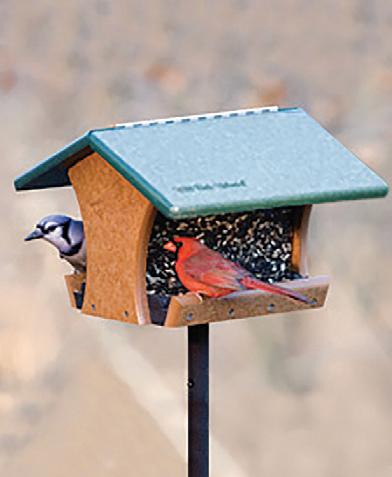

One of them is Democrat Sandra Kennedy, who was on the losing end of that 2014 vote for the Corporation Commission.
She finally got elected to the panel in 2018. By that time, Little had resigned to take a job in the Trump administration; Forese lost his reelection bid that year.
Kennedy then went on to get the commissioner to issue a subpoena of both APS and Pinnacle West Capital Corp., its parent, to disclose political spending.
“On the heels of their 2014 dark
week despite the fact the commission had rejected her request for separate interviews. And Lake’s interview, originally scheduled for Wednesday, would immediately follow.
“It smacks of partisan politics,’’ Kavanagh said of the decision of Arizona PBS to allow Hobbs an opportunity despite her spurning commission rules.
“They’re reneging on a commitment they made to Clean Elections to go by the rules that promote Clean Elections debates,’’ Kavanagh said. “And that’s why it’s a problem.’’
He also said giving Hobbs an interview even after she refused to debate will encourage future candidates to do the same, without fear of forfeiting airtime on the Phoenix PBS affiliate.
Kavanagh was not the only Republican lashing out at the station for its decision.
“It just seems wrong,’’ Gov. Doug Ducey told KTAR talk show host Mike Broomhead on Thursday. “And I think PBS needs to fix it.’’




What that means, the governor said, is the station going back to its original arrangement with Clean Elections. That means either Hobbs shows up for an actual debate “or Kari Lake can have that time.’’

“They made a mistake here,’’ Ducey said of Arizona PBS. “They should just rip the Band-Aid off and fix it.’’


But Ducey press aide C.J. Karamargin said his boss would not comment on Kavanagh’s bid to defund the station.
The university, for its part, continues to defend its decision.

ASU Vice President Jay Thorne said it was the “custom and responsibility of Horizon as a news agency’’ to provide time to all candidates. And he said that decision to offer both of them time on the news show -- separate and apart from any commissionsponsored event -- did not violate any agreement Arizona PBS had with the commission.

“The failure of the candidates to come to an agreement on a debate format rendered it dead,’’ Thorne said. “And, lacking that forum, Arizona PBS and Horizon are advancing as they



The Arizona Democratic Party is moving to defend elected Republican officials in Maricopa County from a lawsuit filed against them by the GOP.
Attorney Daniel Arellano said there is no legal basis for demands by the state and national GOP that the county change the rules for seasonal election workers to help attract more Republicans.
The lawyers for the GOP contend that it is things like the hours required that deters party members from signing up. And they want Maricopa County Superior Court Judge John Hannah to order the Republican-controlled Board of Supervisors and Stephen Richer, the Republican County Recorder, to make adjustments.
“But plaintiffs fail to explain why these requirements make it harder for only plaintiffs to find enough members willing to do the job, when the rules apply equally to poll workers appointed by both major parties,’’ Arellano said.
He acknowledged that political par-

ties have legal rights to designate appointees to various election boards. But that, Arellano told the judge, does not mean the Republicans are entitled to demand new rules because they can’t find enough people to serve.
“They identify no legal basis for their startling assertion that those designees are exempt from the county’s generally applicable requirements for the positions to which they are appointed, or that the county is somehow required to alter those requirements to make those positions more palatable to designees who are unwilling or unable to serve,’’ he said.
The lawsuit by the Republicans, filed earlier this month, is currently limited to Maricopa County. But a ruling in the party’s favor could pave the way for similar claims elsewhere where the GOP cannot find sufficient party members willing to serve.
It also comes as state party officials, including Kelli Ward, who is the chair, continue to question the outcome of the 2020 election, though the new lawsuit does not seek to link the outcome with the issue of whether the
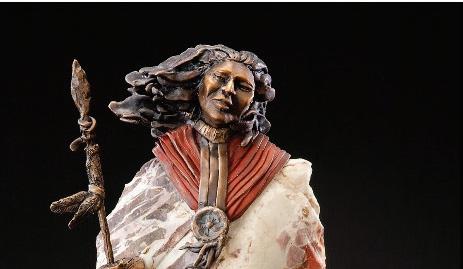

money spending, there was an enormous rate increase and confusing rate plans for APS customers to choose from, providing that dark money takes money out of people’s pockets,’’ she said. And Kennedy noted that when APS went public with its funding on commission races the company also disclosed other spending that year.
That included $50,000 to the Republican Governors Association, which helped Doug Ducey win his first election, and $425,000 to the Republican Attorney Generals Association which, in turn, bought commercials to help elect Mark Brnovich.


Company officials said in 2019 they would not fund future campaigns.
The measure also has other backers.
“The League of Women Voters of

Arizona believes democracy should be protected from distortion by undisclosed individuals and corporations buying media in election campaigns to persuade voters,’’ said organization president Pinny Sheoran in a statement of support.
The merits of the proposal aside, Mussi called the measure “incredibly confusing.’’
As crafted, it requires campaigns to trace the cash back to the original donors, even if the money has been run through multiple organizations.
“Compliance with this thing is going to be almost impossible,’’ he said. “How do you comply, really, with that without either forcing every organization into entering into complicated agreements with each other, or forcing groups not to associate with each other at all?’’















Kick off Event










Aspirationalyetrealistic, thisslidingwallseamlesslytransitionsbetweendreamsandreality.




Introducing MILGARD® MOVING GLASS WALL SYSTEMS. This innovative solution blurs the line between inside and out of the question. Aspirational yet realistic, this sliding wall seamlessly transitions between dreams and reality.


Available

Introducing MILGARD® MOVING GLASS WALL SYSTEMS. This innovative blurs the line between inside and out of the question. Aspirational yet this sliding wall seamlessly transitions between dreams and reality.

art is the maintenance and conserva tion of these pieces,” Wuestemann said, explaining:
“Because Scottsdale is growing, there’s a lot of building activity and be cause of our public art ordinance feed ing this percent for the arts program in two of the city’s character areas – Old Town and the Airpark – it creates a big backlog of inventory of pieces we have to produce and so every year, the col lection is growing significantly.”
He said an internal estimate of that collection’s worth exceeds $200 mil lion and that “we have a relatively small fund to conserve these pieces.”
Additionally, some pieces have reached a high value and need special attention, including the Pima Freeway screen walls, which Wuestemann es timates could require a million-dollar renovation.

He said Pima Freeway’s screen walls have “faced significantly” and that re painting poses “a huge workload.”
“The sun fades the coloring, there is some porosity now to the concrete be cause these are big cast concrete pan els and exhaust fumes have started to erode them a little bit,” Wuestemann said. “There has to be some refreshing
of the concrete work itself to make all the relief work really clear and sharp again.”
The screen walls have also fallen vic tim to projects like the widening of the freeway.
“ADOT has done a lot of work on the Pima freeway and does continue to do some work.” Wuestemann said. “So, in a couple of sections, pieces had to take be taken out to widen the roadway and when they went back in, they were a little bit busted up and we have to fix them.”
Wuestemann has had to keep an eye on beloved works that thousands of patrons interact with annually.
“On the other side are things every body loves the ‘Love’ sculpture here on the Civic Center,” he said. “Normally throughout the year, it has so much at traction and a lot of people take their picture in it. Oftentimes, that means people step into it or climb up on top, or (place) their kids into one of the let ters and we love that because public art should be that accessible.
But the paint gets chipped since it’s a metal sculpture and “that has a layer of caustic and then the paint on top of that,” he said. “So, probably, twice a year, we actually fix up that piece dur ing normal use just for wear and tear.”
Wuestemann said he is considering other mechanisms for funding as op posed to using bond money each year to fund projects.
“There are a couple of simple things we could do to create a better pool of funding,” he said. “If we were, for in stance, to implement a surcharge to permanent fees or something like that, even just a couple of bucks, which could generate a pool of funding an nually that we could then use to keep these pieces well preserved across the city rather than always having to go to the city council.”
a rope forming into a lasso that Wue stemann called “a big cast-aluminum piece that sort of echoes this idea of Alaska or Western days but in a very abstract way that says ‘we’re a modern city and we’re moving forward but we have this great history.’”
This is a work that Wuestemann has had his eyes on building ever since he took on his current role more than four years ago.
there.’ And I said, ‘well, that’s great! Public art could do something.’ So, we shifted some project money around, allocated it and came up with this beautiful piece.”
Though the piece has fallen victim to supply chain shortages that have af fected its fabrication, it is expected to be installed early next year.
Scottsdale Arts president and CEO Gerd Wuestemann last month addressed Scott sdale City Council on behalf of Scottsdale Public art to address three matters: con serving Scottsdale Public Art’s multi-million dollar collection, informing the council of a new project and discussing future projects.

He said a permanent funding stream “would make sense” and provide “a pool of money that we can then use periodically for the big upkeep and use throughout each year for the smallest things.”
Wuestemann also discussed some big projects he is excited about.
The first is the installation of a public art piece inside the Drinkwater Tunnel that is designed by Barbara Gregory.
The piece gives the appearance of
“When I started my job here, I walked around this campus and I thought ‘it’s beautiful here, but we’re sort of turned inward and you can’t find us,’” Wueste mann said.
“And then I rode my bike through the tunnel and I thought ‘there’s a great arts campus, a great Civic Center on top of this as you’re driving through’ I thought ‘we should have a public art installation in here.’”
Wuestemann wasn’t alone in his epiphany.
“And then I had a meeting with Jim Thompson, the (current) city manager and he said, ‘I’d love to do a project in
Wuestemann also has some ambi tious plans following the conclusion of the Civic Center construction.

He hopes to construct a landmark piece near the 2nd Street entrance to the Civic Center so that passersby knew they were near an art campus.
“Going back to my first few weeks here in this job four and a half years ago (I thought) ‘as beautiful as this campus is why does it seem so hard to discover us?’
“We have this parking garage here but it is a roadblock to the rest of the city. We have the Saguaro Hotel to our north, but that blocks us from the












GOP has enough poll workers.
The Arizona Republican Party and the Republican National Committee contend that Maricopa County is not complying with requirements to have inspectors from both political parties at polling places. Similar requirements exist, the lawsuit says, for the boards that oversee processing of early ballots, vote adjudication boards and the boards that oversee operations at county election headquarters. What that resulted in, attorneys for the party charge, is the county hiring 857 Democratic poll workers but only 712 Republicans. And 11 county voting centers in the 2022 primary had no Republican poll workers at all. County officials do not deny that some polling places came up short of Republican watchers. But in a sepa-
PBS from page 17
would under any other circumstance in providing time for each candidate.’’
That’s not exactly true.
In 2018, when Ducey refused to debate Secretary of State Ken Bennett ahead of the Republican gubernatorial primary, the station gave Bennett airtime on his own. And just this year former Nogales Mayor Marco Lopez, seeking the Democratic nomination for governor, got a half-hour interview with Simons after Hobbs refused to debate him.
PUBLIC from page 20
rest of Scottsdale. And Drinkwater is not a surface road anymore, it’s buried which makes this beautiful green space bit it disconnects us,” Wuestemann said.
“So the only real sort of frontage that we have for our venues …is Second Street and every day we see people are trying to look for our museum and our center and can’t find us. Or people are trying to enter the civic center from the south and think there is no way to get in.”
Wuestemann plans to propose a gateway piece that looks like a steel awning during the city’s application
rate posting, the county Elections Department said it’s not because of the lack of efforts.
“Unfortunately, not all are willing or able to serve,’’ the agency said. And then there’s the problem of election workers quitting at the last minute.
But GOP attorneys say there’s a simple solution: Ease the hours that election workers are required to work and make other changes that make the job more attractive to the elderly and those with disabilities. And that’s what they want Hannah to order.
Arellano said the GOP waited until a month before the election to demand the changes.
County officials acknowledge poll workers have to show up at 5:30 a.m., a half hour before the doors open, and remain after the last votes are cast at 7 p.m. and the election materials are packed up.
“Telling such potential board members that they will not be appointed unless they agree to lengthy and onerous day and hour commitments screens out anyone with full-time employment or family commitments and thus many of the individuals the Republican Party has nominated,’’ the GOP lawsuit claims.
What it also does, the lawyers say, is screen out many elderly and disabled people who would otherwise be willing to serve.
Arellano, however, said if the Republicans selected by the GOP to work the polls are unwilling to serve because of the hours, “that is a problem for plaintiffs to solve by designating election workers who are willing to do the job,’’ not by asking a judge to change the work schedule.
“Nor do they explain why Maricopa’s hour requirements deter Republicans
more than board nominees from other political parties,’’ Arellano said.
He also noted there are more than 100,000 more registered Republicans in the county than Democrats, yet the Democrats “have managed to designate poll workers who will do the job.
Megan Gilbertson, spokeswoman for the recorder’s office, said there would be “many logistical and operational issues’’ with shorter shifts on Election Day.
For example, she said, the county planned to hire 2,148 poll workers for the August primary. Two shifts would have required 4,296.
“Partially staffed vote centers combined with a lack of experience because they wouldn’t have as much time in the job creates a significant risk for errors and points of failure, including the likelihood of longer lines,’’ she said.
Similar arrangements have been made in other races lower on the ticket.
“I’ve given you the comment I’m going to give you on that,’’ Thorne responded.
Whether there will be back-to-back appearances as proposed this coming Tuesday remains to be seen.
Lake said Wednesday, after Arizona PBS announced its decision to give time to Hobbs, that she would appear on the air at the station only if allowed to actually debate her, as was the original arrangement.
“I will agree to appear with Katie
Hobbs next Tuesday, on the stage, together,’’ Lake said. "And if she doesn’t appear with me, they should kick her out and say she can’t be on the airwaves of PBS.”
On Thursday, Lake press aide Ross Trumble said he won’t speculate on what the GOP nominee would do until the commission makes further comments.
But Tom Collins, the commission’s executive director, said the only thing being considered now is whether another station would give Lake time on her own, as was the arrangement with
Arizona PBS after Hobbs backed out of the debate.
Eliminating state funding would have an effect.
The most recent figures show that just $488,652 of the station’s $20.2 million annual budget comes directly from ASU, with the largest share, about $7.3 million, in subscription and membership income. But the university provides nearly $2.1 million in “indirect administrative support,’’ which likely includes space and utilities in the Cronkite School in downtown Phoenix.
process for capital projects next year.
“To me, I think it’s a natural extension of the Civic Center renovations even though it wasn’t in the scope of the project,” Wuestemann said. “We hope to think that for every for a relatively small, very modest price tag, it would be nice if we could install this piece in the next year or so.”
He also hopes that this project could be installed with the proposed project of streetscaping Second Street.
“The city has already made plans to start streetscaping Second Street, something that we’ve talked about for a long time to create some shading, to create a bike path and to connect us from here from this Drinkwater Sec-
ond Street intersection down to the Marshall way intersection,” Wuestemann said.
“If the plan is to start that streetscaping here on our corner in front of our campus sometime mid-next year and if and when that happens, I think at the same time, we should start this gateway construct as well because it just makes sense and it saves us probably a million bucks in the process.”
Although that project is a big maybe at the moment, Wuestemann plans to meet with Council on Dec. 7 to discuss a rewrite of the public art ordinance so that Scottsdale Public Art could expand its reach into neighboring areas.
“The current ordinance goes back
parts of it go back to 1983. I think when public art as a program was founded, and so it’s kind of like the house that was renovated one too many times in that you can’t find your way around the document anymore,” he said.
“So we felt that it was important to do a fresh, fresh rewrite of the ordinance and to streamline it a bit and make it more user friendly in the first century,” Wuestemann said.
“Public art right now is limited to two parts of Scottsdale, the Old Town area and the Airpark area, so we would love to be able to develop all eight character areas and we’d love to open it up to be able to put public art and other character areas as well.”























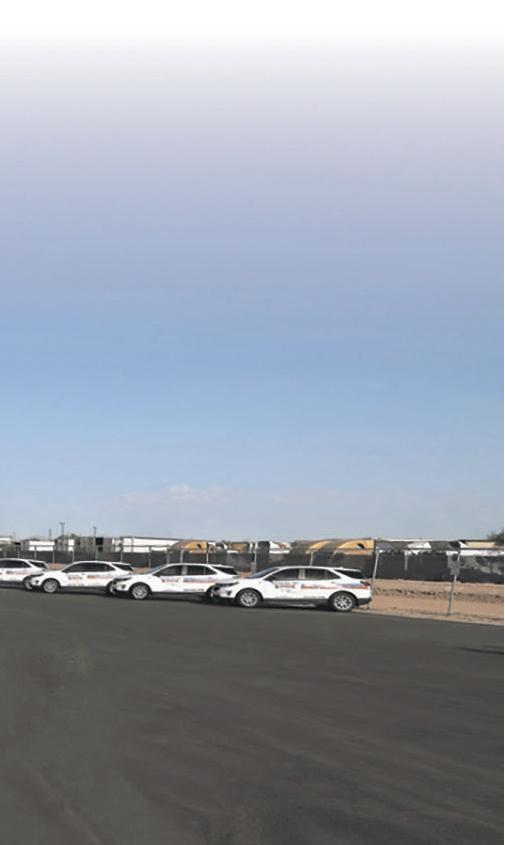













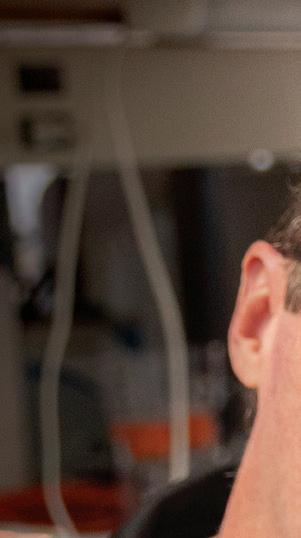








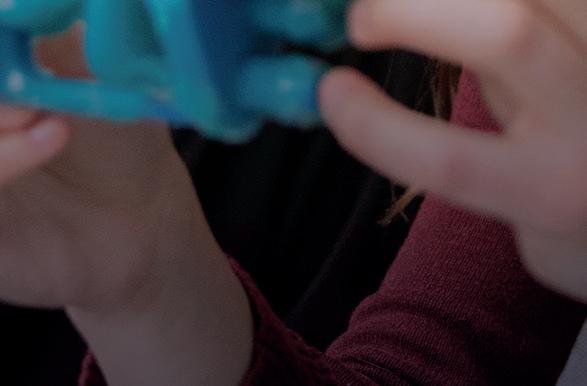




Lessthan a month after Scottsdale














Rep. John Kavanagh couldn’t find anyone to defend his bill that curbs filming of police actions, a Mesa judge has sentenced self-described “guerilla journalist” Christopher Ruff to at least five days in jail in for videotaping of four police incidents and walking into a restricted area in Mesa’s City Plaza Building after being told not to.
The judge two weeks ago also threatened to lock him up for up to six months if he doesn’t cease filming police in Mesa while on probation for three years.
But the circumstances that have Ruff in trouble differ somewhat from the law Kavanagh pushed last session and that was blocked permanently after his legislative colleagues and the state Attorney General declined to defend against an ACLU challenge in federal court.
Kavanagh’s bill made it make it a crime to videotape police activity within eight
feet and after someone is told to stop.
In early 2021, the Mesa native started showing up at police scenes with a camera where officers were working. He recorded and livestreamed the activity with the avowed purpose of catching violations of his First Amendment rights and holding police accountable for following rules and procedures.
He has more than 100,000 subscribers on his YouTube channel, and creators with this level of viewership make roughly $500 to $1,000 per video, based on a survey of content creators last year by Business Insider.
But Ruff said, “This ain’t about money or clicks and views as believed by many. There is real corruption happening here, and it goes much higher than just the police department.”
Ruff has frequently filmed in Mesa, but he travels to other Valley jurisdictions as well. He has racked up six filming-related court cases in Mesa, two of which were dismissed. The recent sentencing was for the other four cases.

 Rep. John Kavanagh
Rep. John Kavanagh

Ruff’s sentence includes 180 days of suspended jail time.
If the sentence sticks, this time will hang over Ruff’s head during his threeyear probation.
A condition of that probation is: “You shall not go to areas where the Mesa Police Department are conducting an in-
vestigation, and you shall not record any members of the Mesa Police Department while you are on probation.”
Stating he will appeal, Ruff, who recently became a father, believes he’s being wrongly punished for exercising his constitutional rights.
“I am allowed to walk around and film things,” he said in court before sentencing. “I am allowed to swear in front of a police officer in close proximity. It’s called the First Amendment, freedom of speech and protest.”
But Judge Raymond Schumacher ruled that Ruff went beyond protected First Amendment activity, which has been widely interpreted to include the right to film in public, in the four cases he was charged for.
“In terms of the First Amendment, I think the prosecution is correct in their statements, Mr. Ruff, that the police, really their concern is, one, the safety of themselves and the safety of others,
to deteriorate.”
was the face of Maricopa County Animal Care and Control’s part in a national campaign early this year as it tried to ease overcrowding at its Phoenix and Mesa shelters.
Described as “a giant pup who loves to run zoomies in the yard and play outside, but what he really loves is getting atten tion,” the 3-year-old Rottweiler-mix was photographed smiling as his head was being scratched.
Four days after the Bissell Pet Founda tion’s national Empty the Shelters cam paign ended on May 15, Rookie was eu thanized.
His mental health had declined after an administrative reorganization that disbanded the county shelter system’s behavioral team.
“Basically, it’s stressful at the shelter,” said Kim Schulze, the shelters’ former county behavior and training team man ager. “Lots of dogs don’t do well and start
Whether Rookie’s death could have been prevented had the county not ter minated the team is debatable.
But animal advocates said its disman tling was a bad idea.
That and other alleged conditions have prompted a petition calling for reform at the shelter.
Behavior team dismantled
The county hired Schulze in June 2017 after she had been volunteering there since 2014. She took a substantial pay cut to oversee a team of seven, assessing cats and dogs coming into the two shelters in Phoenix and in Mesa and keeping them mentally and physically healthy during their stay.
“Maricopa County takes in an extreme ly large number of animals and needs be havioral support to make those decisions as to which dogs can be safely placed, which can be safely cared for (and) which dogs can make certain improvements,” Schulze said.
“When the behavioral team started, we
started to do enrichment, giving treats in the kennels, starting to do playgroups and working with animals that needed extra help to be adoptable.”
Schulze and her team were reassigned under a new structure instituted last No vember by Assistant County Manager Valerie Beckett, then serving as interim animal care director.
“She changed my position to training manager,” Schulze said. “So instead of assessing the behavior of animals, I was training staff. She said she wanted every one to be a shelter expert.”
Forbidden from performing assess ments on some of the more challenging animals, Schulze felt her hands were tied and resigned in May. She now works for the Seattle Humane Society.
County officials defended the restruc turing.
“It’s important to us to have staff mem bers who understand behavioral issues in our pets,” said Kim Powell, spokes woman for Animal Care and Control in an email. “In fact, our goal is to have more of them.
“But the behavioral team as a whole did not have a formal training protocol and lacked data to identify if it was helpful intervention in its present state, so we re-structured.”
Schulze disputed Powell’s assessment of her team.
“The behavior team had protocols for training behavior staff,” she said. “There were three levels within the behavior team …Each level had different duties within their job description that aligned with their level of animal behavior expe rience, knowledge, and skills.
“On-the-job training consisted of daily interactions with animals with opportu nities for feedback and shadowing with more skilled and knowledgeable han dlers.”
Schulze said that learning about animal behavior is an ongoing process and that the county shelter needs positions dedi cated to animal behavior.
Rookie, a 3-year-old Rottweiler-mix, was the Maricopa County’s poster dog for a nationwide campaign to ease shelter overcrowding. But four days after the campaign ended, the dog was euthanized.


(Special to the Tribune)
And, she questioned how the county was recruiting staff with behavior expe rience when “behavior” isn’t in any of the job postings.
Lorena Bader, vice president of the nonprofit Four Paws and Friends, be lieves had Schulze and her team been in place, Rookie would have had a fighting chance.
“If the team was in place, (Rookie) would be getting out every day or every other day,” Bader said. “If he was dete riorating, they would have done more to make sure he stayed healthy until he got out of the shelter.”
Bader is circulating a petition drive on change.org demanding the county Board of Supervisors and administration “pro vide proper medical and behavioral care for the animals in their charge.” As of Sept. 28, it had garnered 22,012 signa tures.
Arizona law provides for the creation of county shelters and requires that any impounded animal be given “proper and humane care and maintenance.” Other than that, there doesn’t appear to be any oversight of shelter operations.
The
Shelter associates can’t be expected to become experts in behavior because they don’t have time during their work day of watering, feeding and cleaning to dedi cate to the learning process and they may not have the skills or desire to learn more about animal behavior, Schulze said.
Bader, a retired Corona del Sol High School chemistry and physics teacher, detailed a number of what she called “shelter failings,” and backed as many as she could with department records
obtained through public records
She said she’s contacted veterinarians who left the county but they were fearful of possible retribution from their former employer.

Bader’s complaints also included that MCACC harbored a hostile work environ ment, had low staffing and morale and a high-turnover of staff.
Bader said she volunteered at the shel ter from 2016-19 until she was fired for sharing a photo of temperatures topping 100 degrees in the shelter. She still keeps in contact with some volunteers there.
“The kennels are not always cleaned because there’s not enough staff,” Bader said. “It’s not like they never get cleaned but they’re so short-staffed they’ve start ed not to do deep cleaning. They just started spot cleaning, which is not OK when you have infectious disease in the shelter and have distemper.”
She also said that dogs “don’t get out of their kennels for weeks at a time,” which leads to behavioral problems.


As the line of cars awaiting groceries wrapped around the building, parking lot attendants used orange cones to close the entrance to the food bank and keep the line from snarling traffic on busy Thomas Road. That sent recent arrivals circling the block until the lot reopened.
This is the new normal for St. Mary’s Food Bank in central Phoenix as the number of people in need has risen sharply along with inflation.
“Right now, we’re seeing over 900 families a day come to this one location, and we have hundreds (of distribution locations) across the Valley,” said Jerry Brown, spokesman for St. Mary’s Food Bank. “The number of people who are coming to the food bank is overwhelming, and it’s a number that we have not seen in our history.”
At the two main food banks in Phoenix and Surprise, St. Mary’s saw a daily average of 1,239 families in the first 12 days of September, the latest data available.
Brown said the influx is a direct effect of inflation, which has hit Phoenix particularly hard. In the Phoenix metro, food prices have increased 14.1% over the past year, with food-at-home prices rising by 15.7%,.
“Once the pandemic subsided last year, so did the number of people who came,” Brown said. “We’ve been around for 55 years, and we have never served 150,000 families a month – until (August).”
People are allowed to come once a month for emergency food boxes that include such staples as vegetables, canned fruits, pasta, peanut butter, tomato sauces, beans and rice. St. Mary’s has had to cut down on the number of items per box to ensure all items are available.
Although the emergency boxes are not meant to provide meals for an entire month, families can come as needed to receive items donated by grocery stores, such as meat, cheese, eggs, and soft drinks.
To accommodate the crush of families in need, St. Mary’s has expanded its Monday through Friday hours. During the pandemic, it began using delivery services, such as DoorDash, to provide food to those with-

out transportation. The services now are being used for the elderly and people with disabilities.
Now that federal pandemic assistance has subsided, the food bank relies solely on donations of food from individuals and grocery stores, and on monetary donations from the public. It’s in desperate need of both right now.
“St. Mary’s is buying a lot more food than they had this time last year, and that food is more expensive than it’s ever been,” Brown said.
Bonnie Harvey, who has volunteered at St. Mary’s Food Bank since 1997, blames the economy for the increasing number of people in need, but she’s grateful to see people willing to lend a hand.
“It’s hard on people right now,” Harvey said. “But a lot of people have stepped up to volunteer since the pandemic, especially because they know the problems people are facing.”
Volunteers have begun to return after a steep dropoff during the pandemic, but St. Mary’s still struggles to keep up with the traffic.
Many volunteers are being asked to stay past the end of their shifts to fill vacant positions. In addition to volunteers, the food bank desperately needs food and monetary donations. Every dollar donated provides seven meals, which breaks down to about 14 cents a pound, Brown said.
He said the No. 1 priority of the food bank is to be able to provide every person a meal.
“One thing that’s really important to us is that we feed people so they don’t get sick,” he said. “If you don’t have money to feed yourself, you don’t have money to go to the doctor, either. We want to feed people in a healthy way and to help them get through what’s a very difficult time for a lot of people.”
Although he hopes to see an economic shift, Brown said St. Mary’s Food Bank is bracing for continued hard times ahead.
“I think things have to turn around in the economy before they turn around here,” he said. “It’s ... rolling into what looks to be a very difficult fall because the numbers have not abated in any way, they’ve only gone up.”
“If they’re lucky they get out once every five days for a walk or yard time. If they get sick, they sit in their kennel for two weeks with kennel cough. Some dogs in the medical wing are in there one month and not getting out.”
Rookie’s sad end County records show Rookie came into the shelter Jan. 24 as a stray and was considered “friendly but skittish, allows all handling.” He was vaccinated, neutered and microchipped in anticipation of adoption.
Rookie’s behavioral assessments on Jan. 25 and Jan 29 stated that he was a friendly dog who “thinks he’s a lap dog and wants lots of attention” and that he might be house-broken.
A Feb. 3 assessment, however, began noting he was nervous and agitated and did not want to re-enter his kennel.
A Feb. 26 evaluation reported Rookie fought with a dog in a neighboring kennel and on March 9, he was “barking, growling, snapping teeth, lunging at other dogs.”
On March 12 the records showed that Rookie was “very stressed, pupils dilated and red eyes, panting... Dog is deteriorating in kennel and stressed out,” a memo stated. “Needs outlet.”
In the shelter’s paperwork, it was reported that a plea was sent out on Feb. 26 and again on March 3 asking fosters to help Rookie.
By May 11, Rookie’s behavior was updated to “urgent.”











“Dog is stressed out and over-aroused in kennel, barking, jumping, panting, kennel fighting,” the memo said. “Dog is unable to fully settle with handlers in yard. Needs outlet. May be at risk of euthanasia on May 18 or sooner if warranted.”
Rookie’s records showed he wasn’t walked daily. In February, he had four walks but then because he was being treated for kennel cough, he was caged for 14 days until the antibiotics were finished, Bader explained.
But the pattern repeated itself with four walks in March, four in April and three in May.
Experts say that shelter dogs need daily physical and emotional stimulation to deal with the stresses of kennel life and




 Member FDIC Equal Housing Lender
Member FDIC Equal Housing Lender


















The experts at Ferguson Bath, Kitchen & Lighting Gallery are here to help create a home that’s as extraordinary as you are.
project, any style, any dream—bring your inspiration to Ferguson Bath, Kitchen & Lighting Gallery. Visit build.com/ferguson to schedule your personalized showroom experience today.

that exercise in general helps dogs avoid boredom, which leads to destructive behavior.
And, according to Guidelines for Standards of Care in Animal Shelters released by the Association of Shelter Veterinarians, “Dogs must be provided with daily opportunities for activity outside of their runs for aerobic exercise (and) for longterm shelter stays, appropriate levels of additional enrichment must be provided on a daily basis.”
Powell said, “Unfortunately, we sometimes have over 800 dogs in our care at the two MCACC shelters and not every dog can get out for a walk every day, which is why we desperately need volunteers to help our staff with cleaning kennels, daily enrichment, and of course, walks.
“Staff cannot get to every dog in addition to their other duties,” she said.
Powell added, “Our current director has been one of MCACC’s longest serving volunteers and he has seen volunteer engagement wax and wane over the years. We really need more volunteers to sign up for walks to help us get the hundreds of dogs out for walks every day.”
She also denied Bader’s claim that inkennel enrichment is sporadic.
Bader said while the Arizona Humane Society gives five different types of enrichment daily to animals for their senses – eat, smell, feel, hear and see – that’s not the case at the county shelter.
“At the most at MCACC, they get one of those and it’s often someone walks through the kennels and sprays lavender or goes through and blows bubbles or gives milk bones,” she said.
Powell said Bader’s claim isn’t true.
“Animals receive enrichment every day, including Kongs, food-feeder puzzles, scent enrichment, rawhides, sometimes even music,” Powell said. “There is an enrichment board outside of the first door to the left of the volunteer hallway for specifics.”
Kongs are enrichment toys filled with treats that help relieve a dog’s stress and boredom.
Bader shared a Sept. 12 email from Director Michael Mendel, who stated he was pausing all public group walks and public enrichment stuffing events, effective Sept. 16.
“The two organizations, Four Paws and
Friends and Hope Whispers, have been told that we may not fill Kongs, pass out enrichment or to conduct public dog walks,” Bader said.
“Four Paws does the walks at the West shelter weekly and Hope Whispers does them at the East shelter. We typically get 60-100 dogs out for a 20-30-minute walk. It is often the only time they get out for a week.”
Four Paws also have been buying and stuffing Kongs for the shelter for about a year.
Mendel said while the shelter appreciated the help from volunteers, there were “several incidents that prevent these activities from continuing at this time.”
Examples he gave of “safety-related” incidents included participants wearing inappropriate and unsafe clothing such as shorts for dog walking and displaying unsafe behaviors such as putting their faces close to the faces of unfamiliar dogs for pictures during the walks.
Mendel added that there also have been some recent social media post-
ings of “potential vandalism threats towards staff and/or property,” which he acknowledged wasn’t coming from Four Paws and Friends volunteers.
The shelter director also cited an incident when a group of volunteers overstuffed Kongs, which he said “can cause many dogs to lose interest in enrichment activity.”
He added that the shelter had to throw out over 300 Kongs donated by Four Paws because they were “too full, uneaten, and unable to be fully cleaned for reuse.”
“We have recently looked into purchasing additional Kongs and the pricing went up, so we were waiting,” Mendel said, adding that the group can help in other ways such as joining the volunteer program, becoming fosters or buying prepackaged items such as dog biscuits, hot dogs and bully sticks.
Rookie’s death caused such an uproar that Mendel, who was hired in March to oversee Maricopa County Animal Care and Control, responded.
Mendel in his post noted MCACC at the
time had approximately 695 animals, stressing the county’s capacity for care. He said the shelters were seeing more and more people surrendering their pets because of homelessness.

“We are seeing more animals with increasing dangerous behaviors, especially in the East Shelter,” Mendel wrote May 23. “While MCACC’s intention is to save every animal that comes into our care, I must weigh the safety risk to staff, volunteers, and the public.
“Dogs that receive deadlines are those struggling in the shelter environment and deteriorating.”
He said Rookie received a seven-day deadline and was up for adoption on the shelter’s portal.
“His deadline passed,” Mendel said. “No one came to rescue.”
The last evaluation on May 15 for Rookie said he was walking well on a leash, took his treats gently, jumped up to solicit attention from his handler and had no issues on returning to his kennel.
He was euthanized four days later at 2:29 p.m.
loved very much,” the family said.
Tony Sutton, owner and president of Est Est, Inc. in Scottsdale, one of Arizona’s oldest and most well-known full-service residential and commercial interior design firms, died Oct. 6 after a twoyear battle with cancer. He was 67.
Mr. Sutton was remembered as “a beloved leader and brilliant interior design authority in the Arizona interior design industry,” the family’s announcement of his death said.
“Tony brought his innate creativity, his passion for professional excellence and ethics to every interaction. He was a driving force in positioning Est Est as one of the leading interior design firms in Arizona and beyond.”

Est Est was founded in 1959 by Pat Maas and Bill Benner and it was bought by the Sutton family in 1984.

“Tony took the lead as the visionary and created a company that he
Mr. Sutton began his design career in Springfield, Ill., in 1979 after earning a bachelor’s degree in interior design from the University of Illinois. Under his direction, Est Est won numerous industry awards. He was recently honored with an American Society of Interior Designers Lifetime Achievement Award.
“We are heartbroken to lose a visionary, a mentor, a friend and for me personally - my dad,” said Blake Sutton, now owner and president of Est Est. “His creativity and passion for interior design was alive every single day. His love for and dedication to his family and bettering the local community was an amazing example for so many of us. He taught me so much over the past 13 years as I was by his side running Est Est. His legacy will live on every day.”
In 2010, Blake joined the firm as director of operations, running the company alongside his dad. When
 Tony Sutton
Tony Sutton
Tony’s battle with cancer intensified last fall, Blake stepped up to run the company independently so Tony could focus more on his health.
Blake has spent his entire professional career in the design industry. With an engineering degree in construction management from Ari-

zona State University, he worked in the field for Kitchell Custom Homes, Rowland Luxury Homes and also worked for a few years on the custom Villas at Montelucia Resort and Spa.
Tony Sutton is survived by his wife, Esther; his father and step-mother, Jerry Sutton and Etta; his three children and their mother Tracey Sutton: Blake Sutton and his wife, Kourtney; Zoë Cotan and her husband, André; and Max Sutton; along with his step-daughter, Alessandra Marcus. He also leaves behind a beloved extended family that includes three grandchildren, many nieces and nephews, aunts and uncles.
He was preceded in death by his grandparents, Guy and Ruby Rhodes; his mother, Mary Gayleen Sutton; his son, Alex Rhodes Sutton; and one brother, James Lester Sutton.
A Celebration of Life will take place 5-7 p.m. Oct. 24 at Illuminate Community Church located at 17800 N. Perimeter Drive, Scottsdale.
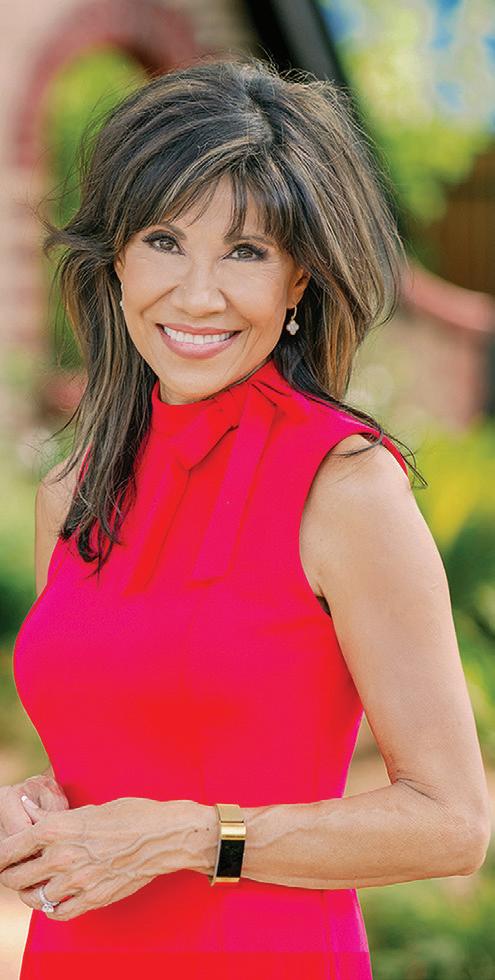
especially when they’re trying to do investigations,” he said before sentencing Ruff.

“The fact that you would’ve just shown up and recorded is one thing; the fact that you would retort and say the things you did is another. You escalated things. You escalated things, and you did it purposefully and you did it intentionally,” the judge told Ruff.
While filming, Ruff sometimes engages in heated debate with police officers when they command him to do something he believes is not required.
If he is told to move away after arriving to film police, often to the other side of a street, Ruff tells the officer he doesn’t have to because he is far enough away and is not interfering with the investigation.
His arguments are based on his understanding of the law, but his tone frequently devolves into insults and disrespect.
“You solicited a trespass you stupid (expletive),” Ruff yells in one video at an officer as he trespasses with six other auditors. “You solicited it. We watched you, you f—--- idiot.”
For that episode, Ruff received a 180day suspended jail sentence, and was order to take counseling and anger management classes.
In the same video, Ruff and others continue to badger the officer with insults as he walks alone across an empty lot to
his patrol vehicle. Some shine a light in the officer’s face when he turns to the crowd.
The judge referenced this video in particular in explaining his sentence.
“The video that I looked at, I looked at it several times, where you approached the officers and would yell in their faces and say the things you did, especially when there was a group of people, and I could see the officer walking away, and clearly the officer had concerns for his safety,” Schumacher said.

Schumacher cited several factors for giving five days of jail with the prospect of more.
“It’s based upon your prior criminal history. It’s based upon the number of cases you’ve picked up in this court. It’s based upon the conduct that you continue to show and the disdain that you continue to show not only in this court but others,” he said.
A decade ago, Ruff pled guilty to armed robbery and finished a seven-year sentence in 2017. He said he has been clean since then and started a local business.
Ruff said in his closing statement that jail was not appropriate for the case, and noted his partner was about to give birth.
But he also remained cantankerous in court, calling the judge and prosecutor “traitors to the Constitution.”

“You cannot criminalize (filming), but here we are in a joke municipal court and you just criminalized it and you’re about to sentence me, so have fun.”


A r c a d i a O r t h o A Z
c o m
Approximately 15% of seniors purchased a long-term care insurance policy while they were in their 50’s-60’s.
These policies are a protection of assets and can be activated when nonmedical care in the home is needed, assisted living or memory care.
Having these policies is de�initely a wise move. However, there have been some shifts in the market and now insurance companies are sending out pre-
mium rate increase letters.

The experts at Amada Senior Care focus on non-medical care and long-term care insurance advocacy.



Our team is able to walk through your policy, the suggested rate increase, and educate you on your policy bene�its, increase options, and what is happening in the senior care space. One client recently wrote:



I knew Amada was the company we needed to guide us through the process. From helping us contact my parents long term care insurance and handling all the logistics of that, plus connecting us with all the available outside resources that were able to help, to �inding us a wonderful caregiver for my mother.
Amada was prepared and ready to handle all
aspects of the process, so that I could concentrate on my mother. Thank you, Amada! -Renee M

Amada experts provide a free 45-minute consult that will help break down the rate increase with the bene�its and allow seniors and families to review the options so they can make solid decisions about the policy.

Before changing or cancelling the policy, contact Amada Senior Care, serving the East Valley, at 480-999-5250 or AmadaMesa.com.
Kimberly Akers, a certi�ied senior advisor, is the founder of Amada Senior Care.



Muscle cramping, difficulty walk ing, burning, tingling, numbness, and pain in the legs or feet are symptoms of neuropathy people live with every day,” explains Dr. Kerry Zang, podi atric medical director of CIC Foot & Ankle. “The thing is PAD has very sim ilar symptoms. So similar that in many cases, people are told it’s neuropathy when it may not be.”
Medicine is often prescribed. “Pills aren’t a cure, they just suppress the symptoms,” says Zang. “If neuropathy
isn’t causing the symptoms, the real problem could get worse.”
It’s important to determine if PAD (pe ripheral artery disease) is causing the pain or making it worse. PAD is plaque in the arteries which causes poor circulation.
“Blood brings oxygen and nutrients to your feet which they need to stay healthy,” explains Zang, “When your feet aren’t get ting an adequate supply, they start send ing signals.” Those signals include pain, burning, tingling, numbness, or cramping.
The good news is PAD is treatable in
an office setting. Dr. Joel Rainwater, MD endovascular specialist explains,
“We go into the bloodstream to find the blockage using imaging guidance. Then with small tools that can go into the smallest arteries, remove the blockage, and restore blood flow.”
Getting the proper diagnosis is the first step to getting better. “It’s all about find ing out what’s causing the problem,” says Zang. “When your feet burn, tingle, or feel numb, it’s your body telling you it needs help, and you should listen.”
If your neuropathy medication is not working, your symptoms may be an indication of another condition.

One in 40 people over the age of 50 may find themselves limiting their activi ty because of a condition called hallux rigidus. It’s a degenerative disease of the big toe joint. As it progresses, the pain in the joint increases and motion decreases.
Don’t wait for your feet to yell at you. If your feet hurt, they are talking to you. Our doctors can help tell you what they are saying.
Does foot pain prevent you from doing your favorite activity?
Do you have burning or tingling in your legs or feet?
Do you have leg or foot cramps with activity or at rest?
If you’ve answered “yes”
“People don’t realize the impact their big toe has on their life. It plays a role in balance, shock absorption, and forward movement as you walk,” explains Dr. Daniel Schulman, of CiC Foot & Ankle. “When the joint is stiff, it’s not able to bend and rotate properly, and it changes how we walk without us even realizing it.” These changes can lead to back or knee pain as well as discomfort in other parts of the foot.

“It always concerns me to hear that someone is playing less golf or stay ing home because they’re in pain,” says Schulman. “There are ways to help.”
The goal is to protect your feet from the repetitive stress of everyday activities. “We have several treatment options to not only relieve foot pain but help im prove how your feet work. If we can help your feet function better, in many cases the need for surgery can be avoided or at the very least postponed,” says Schul man. “Patients are always happy to learn about ways to alleviate their symptoms.”
For golfers, a stiff big toe can make their game suffer.

CharlesPoston Jr. is as sharp as a tack and can recall specific dates, names and milestones from his expansive lifetime.
That might surprise some people since he was born on Oct. 6, 1921.
He can recall people and events from throughout life, starting with his days on the family farm in Leesville, Louisiana, as the second of three children born to Charles M. Poston Sr. and Marjorie Poston, two railroad employees.
His family had relocated to the 200-acre farm that his father purchased in 1931 for $2,500 he had saved from his tenure as a radio operator in the U.S. Navy in WWI.
On that farm, the family made a modest living selling cotton, sugarcane and corn and though his family was not wealthy by any means, growing up on a farm during
Charles Poston Jr. flew a combat plane during WWII and eventual ly settled in Scottsdale well after the war ended. (David Minton/Progress Staff Photographer)
the Great Depression had some perks.
“What I remember most about it is that there wasn’t much money but there was plenty of food because we ate what we
grew,” Poston recalls. “We only bought flour, coffee and sugar and the rest of it we grew.”
Poston remained at this farm for seven
years before hitchhiking southeast to Ba ton Rouge, Louisiana, in 1938 to attend Louisiana State University. Hitchhiking was a method of travel common back then.
“I hitchhiked and most of the male stu dent body hitchhiked to and from school because it was 25 miles to Baton Rouge from where I lived and I could get to Baton Rouge from where I lived by hitchhiking faster than I could by train,” Poston said.
“You could always get picked up and all I had to do was wear a uniform cap or something to show that they knew I was a student.”
Poston studied electrical engineering but he also had another interest – ROTC –and that led him to join the fight in WWII.

“I took Advanced ROTC at LSU and when I graduated from LSU on June 1, 1942, with a degree in electrical engineering
The Saguaros have started ticket sales for their 2022 NiteFlite Golf Tournament and Gala Nov. 11-12.
The event kicks off with a golf tourna ment Nov. 11 at McCormick Ranch Golf Club and continues the following evening with the Night Flight Gala at The W Hotel in Scottsdale.

All proceeds will benefit the Saguaros Children’s Charities foundation. Tickets are available at saguaros.com.
The 33rd annual NiteFlite is one of the longest running and most success ful charity golf tournaments in Arizona and the signature event for The Sagua ros, which recently rebranded from The Scottsdale 20/30 Club.
“We’re aiming to raise $2 million at this
year’s event,” said Saguaros Charity Chair Trent Hancock last year’s NiteFlite Gala Chairman.
“With the passion and drive of our members and supporters, I’m confident we can achieve our goal.”
The tournament features a unique fiveperson-per-group format with a modi fied best-ball scramble scoring system.
The event includes “play with the pros” holes, longest drive contests, closest to the pin contests, and prizes for the top teams.
This year’s NiteFlite Million Dollar Shootout was designed to increase pace of play and maximize fun by giving will ing teams a chance to complete all 18 holes while encouraging teams with less
With mental health issues on the rise, Sierra Tucson Group is carrying its long-standing legacy of clinical and medical expertise to the Valley.
Sierra at Scottsdale Outpatient Care at 8035 N. 85th Way brings hope, according to Monica Clayborn, the regional director of outpatient services.

“Life and treatment can exist in unison, and there is no better place to do that than Sierra at Scottsdale,” Clayborn said.
The strictly outpatient clinic serves adults ages 18 and older who have been struggling with anxiety, bipolar disorder, mood disorders, depression and other mental health concerns, along with those who have co-occurring substance use disorders.
“Outpatient is relatively new for Sierra Tucson,” she said. “The goal is to expand the Sierra Tucson model to other cities. The residents come from around the world and that’s why we’re expanding to other cities.”
The Scottsdale clinic’s core beliefs mirror the Sierra Tucson model of treatment, which calls for a holistic view of care.
“Sometimes we get clients who have successfully completed the program and they have identified early on that they’re in the spiraling process and they reach out to someone to get back on track,” Clayborn said. “They come back for maintenance, which is important, too.”
Adults who receive outpatient treatment at Sierra at Scottsdale participate in evidence-based, research-backed therapeutic interventions provided by behavioral health experts.
Each client receives a personalized care plan that reflects their current medical needs and short- and longterm goals. The average length of stay in outpatient programs depends on the progress each individual makes throughout the course of treatment.
Sierra at Scottsdale offers partial
hospitalization and intensive outpatient programs.
Clients in the partial hospitalization program participate in programming from 9 a.m. to 2:30 p.m. Mondays to Friday, with lunch provided.
The average stay is two to three weeks, with treatments like medication management services, daily group therapy, weekly individual therapy, weekly experiential therapy and family therapy, if requested.
The intensive outpatient program is
9 a.m. to noon Mondays to Thursdays, with an average stay of four to six weeks.
Intensive outpatient programming includes individual therapy session every other week, along with three hours of group therapy daily. Clients can enter either level directly or as a step-down from a higher level of care.
Depending on patients’ needs, they may receive care at one or both levels.
“Partial hospitalization programming is a more structured environment and provides more support than the intensive hospitalization programming,” Clayborn said.
Sierra Tucson and Sierra at Scottsdale offer free assessment and take out-of-network insurance, as they’re not in network yet.
Sierra Tucson’s reputation preceded itself. Clayborn said the organization is focused on innovation and seeks ways to incorporate effective and new treatment modalities for clients.
“We’re not set in our ways,” she said. “If there are new services we want to add, we can and we stick with it. We’re always looking for new treatment modalities for clients. It’s important to always be innovative.”
Chief executive officer Dr. Valerie M. Kading has seen an uptick in maternal mental health, eating disorders and trauma.
“More than ever, Sierra Tucson is committed to our Arizona community and the mental health and substance abuse challenges we have faced from the COVID-19 pandemic,” Kading said.
Information: 888-391-0284 or sierrascottsdale.com
serious golfers to drive their carts over to the party tent.
Located in the center of the action, this year’s party tent will be reminiscent of a Las Vegas day club, with a DJ booth, open bars, cabanas, and outdoor games.
The team with the lowest 18-hole score will be crowned the champion and get five opportunities to hit a hole-in-one and try to win $1 million.
The gala, which starts at 6 p.m. Nov. 12,
dates back to the early 90s, when it was created as an ‘after-party’ for the annual NiteFlite Golf Tournament.
Over the years, it has evolved into one of the premier charity events in The Valley, boasting an impressive lineup of local food and entertainers from around the country.
“The theme for the 2022 Gala is ‘Las Vegas Strip,’” said NiteFlite Chair Mike Bosco. “Guests can expect a magical night of glitz and glamor atop the stunning rooftop of the W Hotel.”
Founded in 1987, the philanthropic and social club has raised millions of dollars for local Arizona non-profit organizations.
Composed of up to 50 young men under the age of 40, it supports children’s charities through three main fundraising events: NiteFlite, Brokers for Kids, and Agents Benefiting Children.
The group not only raises money for children’s charities, but also encourages “hands on” interaction with the children the club supports.
“This active participation serves to strengthen relationships with those it serves and create a true partnership with its charity partners,” a spokesman said.
“Plus, thanks to our dedicated charitable foundation, all proceeds from Saguaros’ fundraising activities are funneled directly to a 501 (c)(3) foundation, with 30% of the funds going into an endowment fund, and the remainder going into a general fund for disbursement to the club’s charity partners.”

and a second lieutenant’s commission in the Corps of Engineers, I was called to active duty three days after I graduated,” Poston recalls.
Six months after being called to serve in the 70th Engineer Light Ponton, where he built floating bridges, Poston remembers, “I went on active duty and six months later I was sick of the Corps of Engineers because Army engineers don’t do engineering.
never shot down but during the first mission, he was shot up.
d b y h e r f a m i l y o n
3, 2022
S h e i s s u r v i v e d b y h e r c h i l d r e n : K a t h l e e n G r a i n g e r , C h r i s t i n e F l a h e r t y ( E u g e n e P e r r i ) , P a t r i c k F l a h e r t y , J e n n i f e r Harvey, and Ellis Harvey (Sarah); grand c h i l d r e n : R e b e c c a O r i f e , F e l i x E W a r d I V , P a u l a W h i t e , K e n n e t h F l a h e r t y , T a y l o r G u s s , A l e x a n d e r G r a i n g e r a n d B e n j a m i n G r a i n g e r ; 5 g r e a t g r a n d c h i l d r e n ; H e r s t e p s i s t e r , P a t r i c i a F i r k i n s ; a n d h e r 3 c o u s i n s , R i c h a r d , N a n c y a n d J o h n H e i n r i c h S h e w a s p r e d e c e a s e d i n d e a t h b y h e r b e l o v e d h u s b a n d s , E d w a r d J o h n F l a h e r t y , I r a E l l i s H a r v e y a n d A n gelo Charles La Russo and her grandson, Brendon Guss

M a r i l y n g r a d u a t e d f r o m L a k e w o o d H i g h S c h o o l i n L a k e w o o d , O H . S h e r e c e iv e d h e r d e g r e e i n e d u c a t i o n f r o m t h e U n i v e r s i t y o f A l a s k a F a i r b a n k s a n d h e r M a s t e r o f L i b r a r y S c i e n c e d e g r e e f r o m S a n J o s e S t a t e U n i v e r s i t y i n C a l i f o r n i a S h e w o r k e d a s a n e l e m e n t a r y s c h o o l teacher and librarian She also worked as a Realtor.


Marilyn loved to dance, enjoyed music, traveling and crossword puzzles She was a n e x c e l l e n t c o o k , k e p t a n i m m a c u l a t e h o u s e a n d w a s t h e u n d i s p u t e d q u e e n o f S c r a b b l e . S h e a u t h o r e d a n d p u b l i s h e d s e v e r a l c h i l d r e n ’ s b o o k s a n d a p o e t r y b o o k . M o s t o f a l l s h e l o v e d h e r f a m i l y a n d i n s t i l l e d i n h e r c h i l d r e n s t r o n g v a l u e s t h a t h av e s er v ed t h em w e l l S h e w i ll b e d e a r l y m i s s e d a n d f o r e v e r i n o u r h e a r t s
Family and friends are invited to attend the service on Saturday, October 29 th @ 1 1 : 0 0 a m a t S t . B a r n a b a s o n t h e D e s e r t Episcopal Church, 6715 N Mockingbird Lane, Paradise Valley, AZ 85253
“They build roads, they build runways, they build floating bridges and they and several lieutenants just got told what to do,” Poston said. “They don’t get a chance to think or any of that and in October or November of 1943, I heard that I could volunteer for pilot training and the Air Corps and I said, ‘I’m out of here.’”
Sandwiched between his post, Poston married in December 1942 and over time had four sons.
Then, on Aug. 31, 1943 – a date Poston remembers vividly – he got his wings and “the grand adventure began,” he said.
Poston aspired to become a fighter pilot but since he was 22 at the time and most fighter pilots were nearly four years younger than him, he knew he would be behind the curve.
However, he was still able to go through combat training and upon completion, he went through gunnery school.
During gunnery school, he drew heavily upon his youth of hunting birds – which he said taught him how to hit a moving target.
In April 1944, Poston was promoted to first lieutenant and volunteered for combat duty in the CBI region (China, Burma and India.)

Not long after that, Poston heard chatter among four men who were looking to go off to Karachi, Pakistan, but needed a fifth man that knew how to fly P-47 aircraft, which Poston happened to know how to fly.
Poston was given a day to get familiar with his aircraft before soaring off to his mission as part of the sixth fighter squadron of the First Air Commando Group –an elite group that had been formed as a result of a conference between British Prime Minister Winston Churchill and President Franklin Delano Roosevelt to rescue Burma from the Japanese for the British.
Poston often tells people that he was
“They had planned a big operation and of bombers and 40 fighters were escorting these bombers to this south part of Burma and when we got there, we were flying in 22,000 feet and our commander of my squadron called and said, ‘sixth fighter squadron is going down and strafing the Japanese airfield,” recalled Poston.
“We went down to strike a Japanese airfield and, me being on my first combat mission, I had tail end assigned to me.”
Poston and his team began firing machine guns at a Japanese field named Mingaladon as he pulled through the clouds and came back around to make another strafing run when he heard a concerning noise.
“I heard some sounds like Chinese fireworks,” Poston said. “There were no Chinese there, though. They were Japanese and that was a Japanese fighter on my tail.”
After alerting his team that he had a Japanese fighter tailing him, one of the members of his squadron “probable destroyed” plane.
It wasn’t until Poston landed at his base after an over 1,000-mile journey that he discovered how close he came to meeting his maker.
“When we got back and landed, my crew chief looked surprised,” he said. “There was a hole under each one of my wings about two feet in diameter.”
The next notable date for Poston from his time in the service was April 1, 1945, when he was promoted to captain.
Poston remained in the reserves after the war and eventually settled down in Ohio with his wife and children, getting a job as a design engineer.
After a while, he later realized that he was better suited to be a salesman.
Poston got a job with Westinghouse and spent six years as a salesman before deciding that the promotions came too slowly.
After that, he landed a job with A.O. Smith Corp. “We made the finest electric

motors in the business and our competitors made junk.”
Poston eventually climbed the ranks to become the general sales manager for the company.
He eventually divorced and as a newly minted bachelor, decided in 1980 to travel to Los Angeles, where he would read an article about river rafting.
When Poston set out to go to the river in Sacramento, a bus picked him up. As he sat alone, a younger woman boarded and asked if she could sit next to him.
Her name was Carole and she was 42 at the time.
Poston admits he spent the next four years chasing after this woman and in 1986, the two were married.
By 1987, a newly retired Poston began looking for a place to hang his head and fancied the idea of living in Arizona.
“Carole and I got in the car and came to Arizona and we checked out Prescott, we checked out Tucson and we checked out Scottsdale and we decided on Scottsdale,” Poston said.
“Carole and I moved to Arizona on April 11, 1987, and it was 100 degrees that day,” he added with a chuckle.


Since then, one of Poston’s sons has passed away but all have married and graced him with 10 grandchildren and nine great-grandchildren.

Poston credits his long life to having a regimented exercise routine.
Although he no longer runs three miles and does 100 pushups and 100 sit-ups, he uses a set of bike pedals that Carole purchased for him to exercise.
He encourages others who wish to have a long life to do the same.



 BY ALEX GALLAGHER Progress Staff Writer
BY ALEX GALLAGHER Progress Staff Writer
Dillan Micus will never forget the day he decided to take a fresh approach to life.
Although Micus was extremely suc cessful in his career as the youngest person in Equitable Southwest (for merly AXA Advisors Southwest) to take on the executive vice president role and had grown the business to $3 billion, his personal life was in sham bles.
“Around 2012, as we started having some success in the business, my pri orities started to change. My priori ties were laser-focused on the busi ness, being in the office and growing it,” the Scottsdale man recalled.
“I was in my 30s, I was making a pretty good living and we started to build a team, which meant I didn’t
need to be there every day and I start ed to find my priorities. I got divorced
and my priorities started to be fo cused more outside the office.”
As his priorities changed, so did his habits.
“My habits completely changed from where they were before. I enjoyed the outside activities out of the office a little too much to a point where I felt like alcohol was more in control of what was going on and I wasn’t,” Mic us said.
“I made a decision that it was no longer a good return on investment for me and it had kind of turned (me) into a person I didn’t like, so I checked in to an outpatient facility in 2016.”
Micus didn’t tell anyone he had entered rehab and said that sub consciously he knew his sobriety wouldn’t stick.
“It didn’t take the first time, which was part of the process, and I was sober for a couple of months but by
 BY ALISON STANTON Progress Contributor
BY ALISON STANTON Progress Contributor
WhenDr. April Estes started col lege at San Diego State Univer sity, she had no plans to get into healthcare.
“Honestly, I’m a little unusual in that I was on a totally different career path. Through college I was working in a re search lab, and was going to become a mo lecular biologist,” Estes said.
All that changed when she suddenly “felt a calling” toward medicine.
“I thought about being a veterinarian but then I met up with some others who were in the pre-med program, and it took off from there,” Estes said.
While she knew she wanted to focus on family medicine – what she has focused on
for the last 20 years – Estes soon realized that working in private practices was not for her.
“It didn’t seem like I was helping any body,” she explained. “Most of the people were healthy and routinely followed up with their healthcare.”
Fourteen years ago, Estes switched her focus to community healthcare, which still allowed her to work with patients of all ages but in a way that was “more fulfilling professionally.”
“I felt needed and like I was making a dif ference in people’s lives because we could take some unconventional approaches.”
“The most rewarding thing about being a NOAH provider is serving the community at large,” she said, adding that she also ap preciates the team approach to commu nity healthcare.
When the new NOAH Cholla Health Cen ter opens in November, 2022, Estes will be working at the clinic, providing telehealth/ QuickCare appointments and in-person medical visits.
The 30,000 square foot comprehensive health center, located near Loop 101 and McDowell Road in South Scottsdale, will be a “one-stop shop” for healthcare.
Dr. April Estes
happy
be practic ing for
In March, 2021, Estes began working as a medical provider for NOAH. The move allowed her to continue working in the field of medicine about which she is most passionate.
Estes said she is looking forward to the grand opening of the new health center, as well as being able to offer medical care that is closer to where patients live.
state-of-the-art brick-and-mortar FanDu el Retail Sportsbook at Footprint Center, home to the Phoenix Suns and Mercury.
is gearing up for a sports year like no other the state could become the sports betting capital of the world – at least for a few weeks.
The Valley hosts a national semifinal in the College Football Playoff at the Fi esta Bowl Dec. 31 at State Farm Stadium in Glendale. Then Super Bowl LVII comes to the same stadium Feb. 12. Finally, the Waste Management Phoenix Open golf tournament unfolds at TPC Scottsdale Feb. 10-12 during Super Bowl week.
Through it all, hundreds of thousands of fans – and bettors – will descend on the Valley.
Add to the mix the ones that are already here, and the impact could be staggering.
In the state’s first year of legalized gam bling, Arizonans wagered nearly $4.8 bil lion, according to a report released by the Arizona Department of Gaming.
The state was the second fastest in the nation to reach a billion dollars in total wagers, behind New York.
Arizona now has 25 sportsbooks, which includes those at bars and res taurants. Options during the state’s six weeks of high-profile sporting events will be plentiful.
“I think it’s a really exciting sports year ahead,” said Chris Jones, the vice presi dent of communications at FanDuel. “I think, from a sporting perspective, there’s a lot that will be going on inside the state.
“We need to stay humble and stay fo cused on building the business, ensuring we are growing at a pace and speed that makes sense, and is sustainable.”
While those events will take place in Glendale and Scottsdale, the Super Bowl’s signature fan festivities are planned for Margaret T. Hance Park in downtown Phoenix, a short walk from the Footprint Center.

All three of the major events bring thou sands of visitors to downtown hotels and restaurants.
On Sept. 9 of last year, FanDuel, the webbased sports gambling and fantasy op eration, announced the opening of a new
A little more than one year after open ing, the company is poised for what could be a gigantic leap forward with several major sporting events coming to the area.
The 7,400-square foot sportsbook is located on the north side of the Foot print Center and features 40 televisions, 26 betting kiosks, a full-service bar and food options.
More than $14.4 million was wagered at the Footprint Center location’s betting ki osks between September and December of 2021, according to wagering reports from the Arizona Department of Gaming (ADG).
In the latest June 2022 revenue report, FanDuel topped $2.3 million in gross receipts. For context, the Caesars retail sportsbook outside of Chase Field grossed $331,583.
Although the retail portion of FanDuel is a pivotal segment of the business, the mobile side utilizing FanDuel’s app makes up an even larger percentage of Arizona’s betting landscape.
The company has successfully executed on both sides of its business.
Calli Varner, the editor and senior cor respondent for ArizonaCasinos.com, said several factors came together to explain the company’s early success.
“I think it’s location, strategy and luck,” Varner said. “I think FanDuel was very smart when they marketed and partnered with the Phoenix Suns and built it in the Footprint Center. I mean, they launched right away, and they were able to have that sportsbook be one of the first to open as well.”
The Arizona sports gambling scene con tinuing to expand, including the grand opening in September of the BetMGM sportsbook outside of State Farm Sta dium, which the NFL Cardinals call home.
TPC Scottsdale is expected to open a DraftKings site in 2023.
FanDuel has employed an ever-growing media strategy that focuses on the enter


Christmas, I was drinking,” he said. “My thought process was, well I’ve taken a couple of months off, I’ve gotten some education and it’s going to be different this time. This time I’ll drink beer and wine and I’m not going to drink before five o’clock and I’ll be able to manage it.”
“By June, that was it. On the 20th of June 2017, I will never forget the day, I took my last trip and I woke up on the 21st, I had a team meeting and I was not in good shape,” Micus said. “I realized at that moment that I was no longer in control.”
That was when Micus decided that it was time for a change.
“I got into AA, I had therapy, I had a sponsor, books, podcast, you name and I just threw that all at it,” he said.
“Over that course of time, my life started to get better and I kind of removed the handicap I felt that I had around my neck which was alcohol which enabled me to go work on the things that I needed to work on that I probably hadn’t over time.
About a year and a half after getting sober, Micus felt comfortable enough to tell his story.
“My life just had gotten so much better from June of 2017 to February of 2019 and I felt comfortable enough to share the story with our firm here,” he said. “What was happening is these five areas just of all of the therapy, the meetings, the books, the podcasts and all the information that I was taking in kept telling me just five areas are what it was.”
The five areas were finances, relationships, education, spirituality and health and those concepts culminated in the F.R.E.S.H. concept.
“If those five areas are out of alignment, you don’t have the best opportunity to perform at your optimal level,” said Micus, who began sharing his story with coworkers and expressed interest in sharing his concept with his employees.

shocked at how impactful it had been to some.
“It got some traction and within a couple of months, I started getting text messages that people had lost 30 pounds, ran a marathon or I did a triathlon for the first time and that’s when it started to impact me. This is better than any paycheck I’ve ever gotten,” he said.
Micus decided to implement his findings in the workplace.
“Fast forward into 2020. We had hired a life coach to come in and talk to everybody and then we hired a health optimization coach to come in,” he said.
After a year larger success, Micus got into talks with universities and a music company in California to further project his message of five ways to improve one’s life.
With the success of the F.R.E.S.H. concept, Micus decided to chase a lifelong dream of his and started 345 Wealth Management this year.
345 Wealth Management focuses on guidance and comprehensive detailed planning around the three most important phases of wealth management: accumulation, distribution, and transfer.
Within 345, Micus is also launching Asset Location Planning (ALP), which seeks out safe, smart strategies to help clients limit tax liability and burden, thereby allowing the allocation of more time and money toward the things they love now and in the future.
“What we did is we took all that education of what worked, what didn’t and what we felt had the most impact over time at our previous firm and we launched 345 Wealth Management,” he said.


“We said, ‘Look, I want to pass this information on to you all that if you go focus on these five areas, your life may be able to get better as well,’” he said.
Although Micus expected the concept to inspire some people, he was
“In its most simplistic terms, it’s a comprehensive planning organization wealth management firm that focuses on the accumulation, distribution and transfer of wealth and some other things that we took out of there is that you need to have a plan for all three of those, you need to reduce your risks and increase your tax efficiencies.”
Because of this, he hopes to give prospective clients a fresh perspective on wealth management and life.


don’t get stuck on the tarmac.
Harbor International Airport is planning upgrades to its runway space with a new taxiway overpass backed by federal funds from the bipartisan infrastructure law enacted last year.
The project is funded in part through the $1.2 trillion Infrastructure Investment and Jobs Act that President Joe Biden signed in November, which will allocate $194 million to these improvements at Sky Harbor, one of the busiest airports in the country.
The project has an estimated price tag of $260 million. The rest will be paid by Passenger Facilities Charges, which are $4.50 fees from ticket purchases that Sky Harbor collects from every eligible passenger who goes through the airport.
Work is expected to begin next year; a completion timetable has not been released.

The 2,000-foot-long taxiway will pass over roads between terminals and connect the north and south airfields, which are bisected by airport roads and terminals.
Phoenix Mayor Kate Gallego said the goal of the overpass is to allow traffic on runways to flow more smoothly so planes
She also said the increased tarmac space will help the airport adapt more easily to inclement weather.
“Your planes are likely to take off more quickly, and you’ll spend less time on the tarmac both landing and taking off,” she said. “Having a bigger, better tarmac will allow us to adapt and have more ability to keep planes flying.”
Rep. Greg Stanton, D-Ariz., said the airport’s location just five miles from downtown Phoenix is its biggest plus, but it also makes expansion difficult.
“One of the very best qualities and most significant competitive advantages of Sky Harbor is that it’s right at the very center of our region right next to downtown, but that also means that land is a little bit scarce,” he said at the news conference. “Instead of growing larger, we have to grow smarter.”
U.S. infrastructure coordinator Mitch Landrieu said the project will create about 3,000 temporary jobs, many of which will be union carpenters, and that union workers hit “every mark” that the infrastructure law requires.

“The funding from this law is a new taxiway right next to us, built by union carpenters to support our community and the travelers that come in and out of this
airport every day,” said Fabian Sandez of the Carpenters Local 1912.
“This project will bring good paying jobs, wages and benefits to members and their families.”













The first portion of federal funding –$5.3 million – has gone to preliminary planning. Construction is expected to begin in 2023. A completion timeline and potential impact on travelers are unknown.
Sky Harbor was the ninth busiest airport for travelers in the U.S. in 2021, according to the Federal Aviation Administration.
It was also the eighth in the world in combined takeoffs and landings in the same year, according to the Airports Council International. Sky Harbor’s website says it has experienced a 20% increase in total passengers from August 2021 to August 2022.
Potential future Sky Harbor projects include expanding one of the three terminals and expanding the PHX SkyTrain to the rental car center more than a mile away.
“With traffic quickly rebounding to prepandemic levels, and nearly $6 billion of unmet infrastructure needs at Sky Harbor alone,” Gallego said, “many more improvements are necessary to keep up with our passenger growth and demand.”
tainment value of sports wagering.


“FanDuel really wants this to be a form of entertainment,” Jones said. “We understand that this is the area that enhances someone’s enjoyment of the game. It certainly enhances engagement and viewership of games.”
NOAH ���� page 40
“What excites me the most about the new Cholla Health Center is that NOAH patients who used to have to travel for appointments will now have a NOAH clinic in their community.”
Estes said she has seen some significant positive changes during her 14 years as a community healthcare physician.
“This includes treating the patient as a whole person by addressing social health determinants in addition to their medical needs, as well as providing multiple





The last time Arizona hosted the Super Bowl back in 2015, it was the most profitable game in Super Bowl history.
The game created a $700 million economic impact in the Valley, according to research conducted by Arizona State’s W.P. Carey School of business, and blew away numbers from the previous two times Arizona played host to the Super Bowl.
service lines including dental services, behavioral health, nutrition and community resources,” she said, adding that patient advocacy is also now a key element of community healthcare.
An avid pet lover, Estes said “I would take all animals home if I could” but manages to limit herself to her 85-pound German Shepard, Odie, which she and her husband adopted in April of this year.
Estes and her husband have been together since 1997 and were married in 2005, a year after she graduated from family medicine residency.
Keep in mind that, in 2015, the Waste Management Open was played during the same week.




Add the Fiesta Bowl’s national semifinal on the last day of 2022 to the already jam-packed Open and Super Bowl, and Arizona is locked in for what could be the most significant economic few weeks in the state’s history.
Estes said she is definitely pleased with her decision to leave molecular biology behind in favor of a fulfilling career in community medicine.
And while Estes enjoys many aspects of her work, having a patient thank her is always an extra special moment as well as a reminder that she is making a difference.
“At least once a week after a video visit is concluding a patient will say ‘thank you, you’ve been very helpful.’”

Information: cholla.noahhelps.org.


 BY ALEX GALLAGHER Progress Staff Writer
BY ALEX GALLAGHER Progress Staff Writer
Scottsdale Museum of Contempo rary Art has opened a unique of the works of 27 Black artists collected by Paradise Valley residents and philan thropists Iris and Adam C. Singer.
The exhibition, featuring 40 pieces of art that will remain on display until Feb. 12, is organized into four categories: portraiture, mythology, abstraction and a combination of portraiture and ab straction.
“Iris said she was always drawn to portraiture collecting and Adam was al ways drawn to abstraction, so it’s kind of sweet that it has those ends of those spectrums and everything in between,” said SMoCA Director and Chief Curator Jennifer McCabe.
Though the Singers had spent a quar
ter of a century collecting works, Mc Cabe says that it took nearly a year to
plan the exhibition, which covers about 7,000 square feet of museum space.
To organize 40 artworks, SMoCA reached out to Allison Glenn, currently senior curator at Public Art Fund in New York City.
“We invited a curator, Allison Glenn, to make a story behind all these works and so Allison came up with that idea of the title in our time since these works are recent in that they’re all within the last 20 years,” McCabe said.
The gallery offers guests a different feel at each twist and turn through the exhibit.
The first set of paintings appears in a brightly lit room that highlights the vi brant colors of the portraits. That gives way to a darker room that enhances the mystique and mythology of the works.
After guests turn the corner into the next room, they are greeted again by a
 BY ALEX GALLAGHER Progress Staff Writer
BY ALEX GALLAGHER Progress Staff Writer
Larsen Gallery’s annual fall auc tion is set to kick off Oct. 22 and this year’s pool of 400 lots has gallery co-owner Polly Larsen anxious to get the bidding going.
This year’s lots include works by big names like Jean-Micheal Basquiat, Edward S. Curtis, Dale Chihuly, Keith Haring, David Hockney, the Maulthrop family, Ed Mell, Fritz Scholder, Paolo Soleri, Rick Wolfryd and art and furni ture from the estate of Fred and Gail Tieken, who both passed away last spring.
“There’s a lot of interest in a lot of different things, which is great be cause what’s so great about our auc
tion is we have things that are 500 to $1,000 and things that are $50,000 to $70,000, so a lot of people can play,”
said Polly Larsen.
The auction draws heavily from the sale of the Tieken estate.
“They were pretty major collectors and we probably have about 60 lots from them,” Larsen said.
Among those lots are two pieces that Fred painted himself and the their sale for a combined total of between $800 and $1,500 will be donated to the Scottsdale Museum of Contemporary Art.
“We actually suggested it for the es tate executor because they were active with SMoCA and we thought it would be a good opportunity to get Fred’s name out there as an artist,” Larsen said.
“He showed at the Royse Gallery over on Main Street and he had some gal leries in Venice Beach and Marina del
SouthernCalifornia creative Ashli St. Armant had a plan to write a musical about the Underground Railroad.


She had not found the setting for it until she visited Oak Alley Plantation in Vach erie, Louisiana, where some of her ances tors worked as slaves in the 1700s.
Two rows of magnificent oak trees cre ate a grandiose front pathway and the tour guide remarked, “Can you imagine what these trees have seen and witnessed?”
“That was it for me,” St. Armant said. “My ancestors walked in, and they were like ‘we got this!’”
Her ancestors will possibly be appeased when the Chandler Center for the Arts premiers “North, The Musical” in early No vember.
Chandler joined three other cities nation wide to commission St. Armant’s theatri cal debut, which she created and directed and is produced by actor Isaiah Johnson of “Hamilton” and “The Color Purple.”
But St. Armant has set her sights on Broadway.
A composer, musician, jazz vocalist, mu sical theater playwright, author and youth educator among other skills and talents, St. Armant began her career as a pre-school music teacher and soon started writing content for young audiences.
A rambunctious only child, she grew up with many children around because her mother ran a home daycare center. Musical instruments, make-believe and children’s
entertainment were part of the culture of her home.
She could not escape the influences of her childhood.
As a teen, she wanted to be a star on Broadway. She still feels it is within her reach, although the path has been circu itous, with a lot of distractions.
“I feel like Dorothy: she has these discov eries and makes new friends along the way, she has distractions, and feels it a waste of time, but at the end she realizes that was really the point of the journey,” she said.
“That’s how I feel about my journey to
wards Broadway, too. I believe it’s going to happen. I’ve had these extremely fruitful and fulfilling experiences along the way,” she added.
St. Armant is buoyed by the response to “North” so far. She drew on her multifacet ed aptitudes and her creative community to assemble it and rates it as her biggest accomplishment yet.
“It’s been the biggest feat even to get it to this point,” she said. “It’s the biggest team I’ve had to build, the most money I’ve had to raise, the biggest reach in terms of the audience we’re trying to reach across the country, and also trying to get into Broad way and making those connections.”
Justifiably, she is also proud of it.
“I’m proud of everything I do, but this, for sure, is the most personal thing I’ve ever created,” she said. “To see so many people get something out of it, to appreciate it al ready, and it hasn’t even really even gotten into the stage.”
How did Chandler, which is not on the path of the Underground Railroad, get in volved in premiering the musical?
Michelle Mac Lennan, general manager of Chandler Center for the Arts, said that she became acquainted with St. Armant after she performed a virtual concert through the Dandelion Artists agency dur ing the pandemic. For the concert, St. Ar
mant was wearing the hats of childhood education specialist and artist, working as Jazzy Ash & the Leaping Lizards.
“We fell in love with her voice, immense talent, joy and energy,” Mac Lennon said.
Post-pandemic, the center met with the Dandelion Artists producer Sarah McCar thy.
“She shared Ashli’s new project and the rest, as they say, is history,” Mac Lennan said.
The Chandler Center for the Arts com missioned the musical along with the Lied Center of Kansas in Lawrence, Kansas, Segerstrom Center for the Arts in Costa Mesa, California, and Playhouse Square in Cleveland, Ohio.
The Chandler Center’s agreement in cluded an initial investment of $40,000, Mac Lellan said. In turn, the CCA will host the Arizona premiere on Nov. 4 and have rights to return the production in the 202324 season as part of the national tour.
“North’s” original score features jazz and Black roots music and an uplifting story set against the backdrop of the Underground Railroad, a historical network that helped slaves flee to Canada in the years before the Civil War.
The musical’s characters, Lawrence and his mother, Minnie, escape the Deep South and travel North to find freedom. They travel through Louisiana’s bayous, bus tling New Orleans, and the young town of Lawrence, Kansas. The story reflects the optimism, bravery, wonder and suspense of freedom seekers.
“North” absorbs St. Armant’s personal family stories.
She learned about the community of Ma roons, people who escaped slavery but in stead of traveling north, hid in the bayous of the forests. An acquaintance sent her a book, “Slavery’s Exiles,” that contained a passage about a man named Tam, a com munity leader who was called “the brave one.” He would work for non-slave owning plantation owners and be brave enough to collect money.
“The passage said he was enslaved on the same plantation that my family mem bers were enslaved in, in an account from 1780. He’d run away from the St. Armand Plantation,” she said. “It was pretty shock
Ashli St. Armant has used her multi-talents, creative community and personal drive to present “North, The Musical,” which comes to the Chan dler Center for the Arts in November. (Steve Lorentzen)“North, The Musical” marks Ashli St. Armant’s theatrical debut. (Courtesy of Audience Magnets)
Entering its 45th year of playing music, the Scottsdale Concert Band is eager to get fans into the Halloween spirit by playing a show full of songs that will make them jump out of their seats.
The concert, which is set to take place at the Amphitheater at Scottsdale Community College on Wednesday, Oct. 26, is set to feature tunes from films like “The Lord of the Rings”, “2001: A Space Odyssey”, “E.T.”, “Harry Potter and the Sorcerer’s Stone” and “Star Wars.”
“‘Things That Go Bump in the Night,’ I think means (something) a little different for every single person, so that’s why I have an array of things,” said Scottsdale Concert Band director Michele Kalo.



“Some people think that science fiction is kind of scary. Some people think that old folk legends and Greek mythology is kind of creepy, or some-
thing might be triggered by something that goes bump in the night. So that was sort of my motive from behind that.”
To prepare fans in attendance to get goosebumps from the music, Kalo has spent the last eight weeks meeting
once a week for a two-hour rehearsal with the band – which has finally returned to full force after pandemic limitations.
“We had to take basically a season and a half off during COVID and so last year was the first time that we were




able to have rehearsals again and do some performances with a restricted size on the group for the COVID restrictions that we were under,” Kalo said.
“To be frank, I’m most excited that we get our band back in the 60- to 70-member range.”


Kalo says her membership is a mixed bag of musicians.
“Our membership is awesomely diverse in that our oldest members are approaching 90 years old and then I have a student who was a student of mine when he was an eighth grader last year, and so this year he’s a freshman in high school,” Kalo said.
The band also calls in members from across the state and from all walks of life.
“We have a lot of music educators, doctors, pharmacists and lawyers and we have some people who come from the Glendale, Apache Junction area, Fountain Hills and people south of the

bright light that enhances those exhibits — particularly a mixed media piece by artist Betye Saar that combines a human statue with the legs of a large bird inside of a cage. The work is meant to symbolize captivity and casts three shadows on the wall behind it.
The last segment of the exhibition ends in a dimly lit room that is illuminated by abstract artworks whose colors shine through the dark backgrounds.
According to SMoCA curatorial assistant Keshia Turley, the layout was intentional.
“I think for Allison it was really important to incorporate different spaces within the museum so that people feel like they are entering different spaces, which is why the mythology section is darker and the (Mark) Bradford room has a darker feeling,” Turley said. “It's like we're entering into a new realm.”
There were a few white walls that the SMoCA team felt jazzed up by calling on local artist Merryn Omotayo Alaka to create wallpaper.
“(Alaka) has done pattern work in the past (for us) and so we knew she might be a good contact to reach out to,” Turley said. “She designed the wallpaper specifically for this space connecting the different colors from the artwork but also incorporating a history of beadmaking from Ghana.
“It was wonderful to have her participate and have a local connection with all of these artists who are so widespread right now.”
Alaka’s wallpaper is not the only binding tie in the exhibition as some artists have drawn inspiration from one another.
“In January, the curator invited 10 artists to write short essays on each artwork and artist Derek Fordjour wrote about the influence of Mark Bradford, who’s one of the more well-known African-American artists that’s in the show, on his practice,” McCabe said.

“Each artist has important careers or emerging careers and there’s a lot that you could dig into content-wise, but it’s also just visually really interesting in that there are so many similarities that are at play.”
McCabe hopes that guests are enriched by the exhibit.
“I hope that they understand or find something maybe about painting that they didn’t know about,” she said.
She also hopes that guests view the exhibition as a time capsule of modern art.

“Like the title ‘in our time,’ these artists are important at this moment in time, so we’ll be like a capsule in that way,” McCabe said.
In Our Time: Selections From The Singer Collection

When: Until Feb. 12.









Where: Scottsdale Museum of Contemporary Art, 7374 E. 2nd St.

Cost: Visit the website for pricing.

Info: smoca.org.


Rey, where he lived at a second home,

we just thought it would be good to get his name out there and to have
proceeds go to a charity,” Larsen
The estate also included two pieces by Keith Haring valued between $20,000 and $30,000 and several pieces of furniture.

However, those are just the tip of the iceberg.
The auction will be selling a piece by David Hockney that pokes fun at antismoking ads.

There is a chair shaped like a hand created by artist Rick Wolfryd and decorated by members of the Huichol tribe that is on the market for between $3,000 and $5,000.
Larsen said that she has noticed a great deal of interest online in a glass cube made by Jon Kuhn that is also listed between $3,000 and $5,000.

Glass pieces created by celebrity artisan Dale Chihuly, wind chimes made by famed artist and former Valley resident Paolo Soleri and woodwork from three generations of the Maulthrop
family have also been eyed, according to Larsen.
But the work that has already seen action has been a portrait called “Cabeza” by Jean-Michel Basquiat, which already garnered an absentee bid of $50,000, according to Larsen.

The auction also offers 28 works by western artist Fritz Scholder, that Larsen expects to be gone quickly.
“We’ll sell them all, not only because (his work is) hot, but a lot of them are prints and they’ll do really well,” Larsen said.
The auction will be live-streamed on LiveAuctioneers.com and Invaluable. com but Larsen also expects to see people coming in and out of the gallery.
“It kind of just depends on the time of the day, but sometimes it’s packed in here and other times it’s half-packed.
It just kind of depends on the lots and what’s happening,” Larsen said.


















The other bulk of bidding typically comes via phone. Larsen executed 700 telephone bids during its spring auction and expects to see around the same number of bids.







All told, the Larsen Auction expects to sell 95% of its 400 lots.





When: 10 a.m. Saturday, Oct. 22


Where: Larsen Gallery, 3705 N. Bishop Lane Admission: Free Info: Larsenartauction.com, Invaluable.com and LiveAuctioneers.com

The last time The Maine crossed paths with Jimmy Eat World, it was at a chilly 2010 outdoor show on New Year’s Eve in Tempe that saw The Maine play much earlier than Jimmy Eat World.
This time around, the two bands will co-headline for a special one-nightonly hometown show Oct. 28, at the Arizona Financial Theatre.
“We’re both playing a festival in Las Vegas in October and when we want ed to do another show in the market, Phoenix seemed sensible,” said Jimmy Eat World drummer Zach Lind at a press conference.

The Phoenix alt rockers find this show exciting because they’re sharing a stage with a band that’s been around nearly twice as long as them. The Maine recently celebrated its 15th an niversary; Jimmy Eat World will mark 30 years in 2023.
“I think, for us to be asked to play with them, there is a sense of valida tion, but also we feel like there’s an accomplishment that comes with it in that we get to share the stage with someone that we look up to,” said vo
calist John O’Callaghan.
“It’s also a show that our friends have texted us about nonstop, which is I guess what happens when you’re on a bill with a band like Jimmy Eat World,” said bassist Garrett Nickelsen.
“In terms of the support we’ve been shown from the city and the Valley in general, I feel like there’s an emotional attachment to it because it’s not just a place that we’re playing for the night and then leaving the next day. There’s an inward sort of pride that comes
with it,” added O’Callaghan, an alum nus of Mountain Pointe High School.
The Maine promises a set filled with songs that die-hard fans will cherish and newer fans will hum along to.
“There’s always a level of excite ment that comes with songs that more people come collectively together and say, we all like this,” O’Callaghan said. “We’ve been very fortunate to have a wide variety of songs that resonate with our fan base.
The Maine drummer Pat Kirch also
teased that the band could collaborate with opening act and Phoenix-based singer/songwriter Sydney Sprague on a song she is featured titled “Into Your Arms.”
However, The Maine said that fans can almost certainly expect authentic ity from their performance and some entertainment.
“Hopefully (fans) experience some authenticity and hopefully it’s enter taining,” said O’Callaghan. “Even if it’s not their bag of music, then hopefully they can come away and feel like they saw something relatively unique and something that they can only see when they see our band play.”
It’s been seven years since Mesa alt-rockers graced an Arizona state, as their last hometown performance came during an 18-song setlist during 2015’s Summer Ends Festival at Tem pe Beach Park.
Although the band has kept busy, vo calist/guitarist Jim Adkins said he al ways wanted to do something special for his hometown.
“We’ve always been saving a home town show for some reason or another and we didn’t want to just do some
Clay Aiken wasn’t overly sold when he was approached to host the “Wheel of Fortune Live” tour.

“I wasn’t skeptical, I’d say,” Aiken ex plains.
“‘Wheel of Fortune’ is legendary and there’s no game show that’s more pop ular in the America, etc. How to make it work live was something I was very cu rious about and — holy crap — it does work. It really does.”
The tour comes to The Linda Ron stadt Music Hall, formerly the Tucson Music Hall, on Thursday, November 3,
and Harrah’s Ak-Chin Casino on Friday, November 4, and Saturday, November 5, with Aiken as host.
During “Wheel of Fortune Live,” guests can audition to go on stage and feel like they stepped into the game show. Randomly selected players will have the chance to spin a replica of the iconic wheel and solve the puzzles to win prizes, including up to $10,000 in cash and trips to the likes of Paris and Hawaii at every show. Additionally, hundreds of audience members can win cash and prizes.
“It’s so fun,” he said. “Audiences lose
their absolute minds. I’ve been on tour 11 times on my own with my own shows. In all the years I’ve been touring, I wish I had audiences who were that fun, but I’m not giving away trips to Paris at my concerts. They have a reason to be more excited about ‘Wheel of Fortune.’ It’s really fun to watch.”
Aiken recently starred on Broadway, alongside Ruben Studdard, in “Ruben & Clay’s First Annual Christmas Carol Family Fun Pageant Spectacular Reunion Show” at the Imperial Theater.
This came 10 years after Aiken’s Broadway debut in Monty Python’s “Spamalot.” On the heels of “American Idol,” he became the first artist to have his first single debut at No. 1 on Billboard’s Hot 100 chart.
His subsequent album, “Measure of a Man,” also debuted at No. 1 with the highest first week sales by a debut artist. His 2004 holiday release, “Merry Christmas with Love,” set a record for the fastest-selling holiday album of the SoundScan era and remains tied for the highest charting debut of a holiday album.
The father to son Parker, Aiken served nine years as a UNICEF ambassador and in 2003, he co-founded, with Diane Bubel, what is now the National Inclusion Project to advocate and increase opportunities for children with disabilities to be included in extracurricular activities (such as summer camps and after-school programs) with their nondisabled peers.
Aiken is looking forward to bringing “Wheel of Fortune” back to Arizona.
“Everyone in America is a fan of ‘Wheel of Fortune,’” he said. “It’s been on for 40 years. Even if you’re not a nightly viewer, you’ve seen clips on YouTube. Holy crap. It’s the game that more people play in their living room than anything else.”
Wheel of Fortune Live
When: 8 p.m. Nov. 4 and Nov. 5
Where: Harrah’s Ak-Chin Casino, 15406 Maricopa Road, Maricopa
Cost: Tickets start at $38.50
Info: caesars.com/harrahs-ak-chin/ shows
NORTH
ing to read that.”
Tam became a primary character in the show.
There’s also the coincidence of her name. She had changed her name to reflect the maternal line of her family, Armand. The change was done before she read the book. The slaves took the names of their masters, but were denied the “Saint” on their name.
“I learned my last name was Armand. I changed it to St. Armant, the original last name from France,” she said, reflecting the French Saint Armand, the patron saint of beer, wine making and hospitality.
Because of these and various other chance occurrences, St. Armant feels a spiritual connection to the show she is creating.
“I don’t think it’s by accident that this information came to me, that he (Tam) was also enslaved in a plantation that my family members were also enslaved on,” she said. “And because of the nature of our history here in the States, we really don’t know our family lineage past four or five generations max because our history was erased for us, our last names were taken,
and all that.”
“I can’t know for sure, but I think I know,” she continued. “At the very least, he shares an experience that my ancestors have also experienced on the same land.”
What: “North: The Musical”
When: 7 p.m. Friday, Nov. 4 and 3 p.m. and 7 p.m. Nov. 5.
Where: Chandler Center for the Arts, 250 N. Arizona Ave., Chandler.
Tickets: $32 and $42, $15 for youth.
Information/sales: chandlercenter.org/north or 480-782-2680.
Connected Events: 10 a.m. Oct. 22 at Chandler Public Library: “The Underground and Overground Railroad” presented by Dr. Tamika Sanders.
Nov. 4 in the Gallery of the Chandler Center for the Arts, opening night cast reception after show for ticketholders.
Nov. 5 at CCA: “North: The Musical Talk Backs,” following both the Saturday performances.
thing just to do something, we wanted it to be special,” said Adkins, who graduated from Mountain View High School alongside Lind. “But then other opportunities come up and that ate into our hometown gig.”
With this show, Jimmy Eat World will treat fans to live renditions of the band’s newest tracks, including the single “Something Loud.”
“I think we’re most excited about your newest thing,” Adkins said. “I’m excited to play our song ‘Something Loud’ in front of people in our hometown. It’s been getting good reactions everywhere else we’ve played it, so we’re pumped on it.”
The song is also exciting as it discusses the band’s formative years, according to bassist Rick Burch.
“It talks about being young and excited and discovering playing music
with friends,” said Burch, who went to Westwood High School.
Aside from a set that spans three decades, Jimmy Eat World aims to show off the community of rockers in the state.
“I want people to walk away from it feeling like they participated in a community,” Adkins said. “There are three local bands on the show so hopefully everyone will feel like they’re a part of a community.”
What: Jimmy Eat World and The Maine w/PVRIS, Thursday and Sydney Sprague
When: 7 p.m. Friday, October 28
Where: Arizona Financial Theatre, 400 W. Washington Street, Phoenix
Cost: Tickets start at $43
Info: jimmyeatworld.com, themaineband.com and livenation.com
Valley coming in,” Kalo said.
Despite those differences, they are all bonded by the soothing sounds their instruments produce and are excited to give fans an exhilarating show.
“I usually like to take a little bit of something from the more classical era, so we’re going to open the concert with Also Sprach Zarathustra, which is famous from the movie ‘2001: A Space Odyssey,’” Kalo said.
“Then we’re going to break into a
variety piece that’s basically about lots of death and hell so we start with a bang. Then I’d like to move into using some more modern pieces like this piece called ‘The Four Horsemen of the Apocalypse.’”
Kalo likes to end the set with even more pizazz.
“I always like to bring in some either movie or pop music or jazz at the end of a concert and for this concert, we’re going to be ending with a big John Williams medley of music,” she said.
“It takes you through a sort of a
great tour of a lot of his music from E.T., Harry Potter and, of course, it closes with everyone’s favorite, Star Wars.”
Because of this, Kalo hopes to show those in attendance at the free show that the spirit of music is alive and well in Scottsdale among these musicians.
“We just want everybody to know that, you know, community music is alive and well in Scottsdale,” she said.
Due to the show’s close date to Halloween, Kalo also encourages guests to break out their Halloween cos-
tumes as some band members may be doing the same thing.
Scottsdale Concert Band
What: “Things That Go Bump in the Night”
When: 7:30 p.m. Wednesday, Oct. 26
Where: The Amphitheater at Scottsdale Community College, 9000 E. Chaparral Road, Scottsdale.
Cost: Free
Info: scottsdaleconcertband.org
Scottsdale.org
After an 8-year absence from the Arizona wine scene, the Paso Robles Wine Country Experience is returning to the state with an inaugural appearance in Scottsdale.
The experience on Oct. 27 at The McCormick Scottsdale Resort will feature 23 winemakers and crafters and Paso Robles Wine Country Alliance Executive Director Joel Peterson is excited to return to the Grand Canyon State.

“Scottsdale is such a close market to Southern California and Paso Robles is located exactly halfway between LA and San Francisco,” Peterson said.
“We focused on Texas for a while and then moved to New York, and we’ve done some other states but all of the wineries kept saying ‘why don’t we go back to Arizona? It’s such a great market for us.’
“So, we put the call out to our wineries in Paso Robles, and we’re going to show up with 23 of them, so we’re excited.”
Peterson has a simple goal.
“What I’m hoping for is that people come to the event and get a taste of what Paso Robles is like and how it’s a super interesting, authentic part of California in how cowboys and ranchers surround it and now it’s kind of this winemaker country we have there,” Peterson said.
“I think people will be impressed and blown away by the wines but also find people there enjoying them. I want them to get a taste of what Paso Robles is like, but it will be in their backyard.”
Wine won’t be the only indulgence for guests at the Paso Robles Wine Country Experience.

“We’re working with the hotel cater-
one’s for you to try, but if you’re just kind of a novice, or you just want to kind of see what it’s about, we’ll just kind of walk you through some of the entry-level wines that we have,” Peterson said.
Though Paso Robles is known for its red wines, Peterson said, “We’ll still be coming out with our white wines and rosé but we’re also coming in with a powerhouse of wines that people may have never heard of like Daou and Justin and J Lohr wine – which are some of the bigger kind of nationally produced wines – but we’ve got some really fun boutique wines like Linne Calodo and Full Draw.
er at The McCormick and they’re putting together some cool kind of meats and cheeses and stuff that pairs well with the wines because we want to make sure we’re getting people something to have just besides wine for two and a half hours,” Peterson said.
“And then we partnered with our destination partner called Travel Paso and they’re going to bring some craft spirits. They’re going to be pouring little cocktails, bringing some local honey and some local lavender to show that Paso is this cool place where there’s not only just a boutique kind of wine industry, but there are other makers there.”
However, the main focus will be wine and the experience will have a large sample for guests to savor.
“The nice thing is we’ll have wine kind of across the board in terms of if you know and love wines, and you’re an avid wine drinker, we’re going to have some cool kind of high-end fun
“However, our heritage has always been zinfandel and zinfandel blend, so really over the last 15 years, we’ve gotten known for our Rhône blend in Paso Robles and lately, the cabernets have been taking off,” he continued.
“So, we’ll have some fun and big wines that show well.”
Because of this, Peterson has high expectations for his return to the desert.
“I’m expecting this to be a fun interaction with the people of Scottsdale and when people hear about it, I want it to kind of reinvigorate that relationship between the two cities since we both offer a lot in terms of food and wine.”
Paso Robles Wine Country Experience
When: 1 p.m. to 8:30 p.m. Oct. 27
Where: The McCormick Scottsdale, 7421 N. Scottsdale Road
Cost: $65
Info: pasowine.com
chef Lisa Dahl is ever the optimist – even when it came to opening her second Pisa Lisa in the Village of Oak Creek in July.

“I didn’t like the idea of opening the slowest month of the year, but, in a way, it’s a godsend,” Dahl said, explaining the summer opening have “us the opportunity to ease into it.”
Serving wood-�ired pizzas, organic salads and artisan gelato, Dahl’s Pisa Lisa debuted in 2013 and quickly became a destination. The new Oak Creek store is her sixth restaurant in red rock country.
Popular food selections are named after her family members like the Da Dorothy pizza after Dahl’s mother and made with Mother sauce, provolone-mozzarella, fennel sausage, picante peppers, Parm-Reggiano; and the Justino pizza dedicated to her late son and made with Ricotta, provolone-mozzarella, San Danielle prosciutto gold, organic arugula, and white-truf�le oil.
The new location also features Tuscan tomato bisque soup along with glutenfree, vegetarian and vegan options. Pisa Lisa Oak Creek introduced new dishes like the antipasto selections Lisa’s Plate, an antipasti sampler with fresh bocconcini mozzarella, tomatoes, �innochio slaw, magic mushrooms, caselveltrano olives and �ireroasted artichokes.
The new 3,500-square-foot restaurant has an expansive dining area with 110 seats (64 indoors, 46 patio seating) as well as two communal artisan-style butcher board tables.
The elevated bar (seating 14) surrounded by an eclectic collection of music memorabilia from the ’60s, ’70s and ’80s are sourced from a Capitol Records executive by Dahl’s brother, Jay Levinson. The centerpiece is an 8-foot vintage chandelier �itted with handblown glass and LED lights made by sculptor Dale Evers.
As the executive chef and CEO of the Dahl Restaurant Group, Dahl has earned international recognition for her cuisine stemming from �ive restaurant concepts: Mariposa, Cucina Rustica, Pisa Lisa, Butter�ly Burger, and Dahl & Di Luca Ristorante

Italiano.
Her cooking styles are diverse, including traditional Italian cuisine, rustic Mediterranean fare, South American-inspired dishes, creative burgers, and wood-�ired pizza.
Dahl lives by her mantra, “When you cook with love, you feed the soul.”
She’s hoping to spread those feelings to the Valley when she �inds the right space and offer.
“I wanted to be stronger operationally in Sedona, �irst,” she said. “I always planned it with the hopes before the pandemic that Pisa Lisa and Butter�ly Burger were the types of restaurants that would do well in any market. I want to �irst go into San Diego and Phoenix where we’re so well known by travelers.”
Still, she’s a celebrity in Sedona.
Dahl, who moved to Sedona 26 years ago from the Bay Area, immediately saw a need for restaurants in red rock country. She lives in Oak Creek, in a townhouse on the heels of Cucina Rustica. Along with being a two-time James Beard House-featured chef, Dahl was recognized with the top honor of 2019 Food Pioneer award by the Arizona Restaurant Association’s Foodist Awards.
“I feel like a pioneer,” she said. “This is too pretty out here to not be thriving. This is the gateway to Sedona.”
you love salmon filets, I’m kind of jealous. I’ve tried to love salmon all of my life. But if it’s not done well, I tend to get a little bored half way through the meal. I’m that way with chicken, too. I’ll bet you can relate.
So I’m always on the lookout for a great new way to prepare salmon. Recently, I’ve found one, and I’m filled to the gills with joy!
This dish is sensational. It starts with a beautiful fresh (emphasizing fresh here) piece of salmon, pan grilled simply with salt and pepper. The real flavor bomb comes with the sauce.
It’s a tasty mixture of sundried tomatoes, garlic, artichoke hearts, capers, smoked paprika and baby spinach made ever so rich with heavy cream. The cooked salmon gets to go swimming in this saporous pool of savory sauce before it’s served on a bed of rice or pasta.

You may want to forego the starch and serve it with charred Italian bread slices because there will be some amazing sauce to mop up.
By the way, I mention that fresh fish is better. If you purchase “previously frozen” fish, here’s what happens:
Since fish contains a lot of water, when it freezes, it expands. When it thaws, it contracts and that rips apart the fibers of the fish, allowing moisture to leak out. Have you ever noticed a lot of water in the package of a piece of frozen fish after it’s been
1 tablespoon olive oil

1 lb salmon filets (or 4 salmon fillets)
1 teaspoon salt
3 cloves garlic, minced ¼ cup sun-dried tomatoes, chopped fine 1 cup artichoke hearts, chopped
2 tablespoons capers, drained 5 oz fresh baby spinach
1 cup heavy cream ¼ teaspoon smoked paprika
1. Heat 1 tablespoon of olive oil in a large skillet on medium-high heat.
2. Season salmon fillets with salt.
3. When the oil is hot, add salmon filets flesh side down (skin side up). Sear for about 3-4 minutes. Reduce heat to medium. Flip
Also, previously frozen can create a mushy flesh, so opt for fresh if available. Give this Creamy Tuscan Salmon Skillet a try. You just might get hooked.
the salmon fillets to the other side (skin side down). Sear for another 3-4 minutes on medium heat. Remove salmon from the skillet. Place on a plate and tent with foil.
4. To the same skillet, add chopped sundried tomatoes, minced garlic, chopped artichokes and capers. Cook, stirring, for 1 minute.
5. Add fresh spinach, and continue cooking until the spinach wilts, about 2 minutes.
6. Add the cup of heavy cream and paprika. Bring to simmer, cooking for about 1 minute, stirring constantly.
7. Add salmon back into the skillet with the cream sauce.
Spoon the sauce over the salmon, and simmer until the salmon is warmed and cooked through. Season with more salt, if desired. Serve with rice, pasta or crusty bread. Serves 4.
This recipe gives salmon the kick that’s been missing
think oxygen therapy means slowing down,





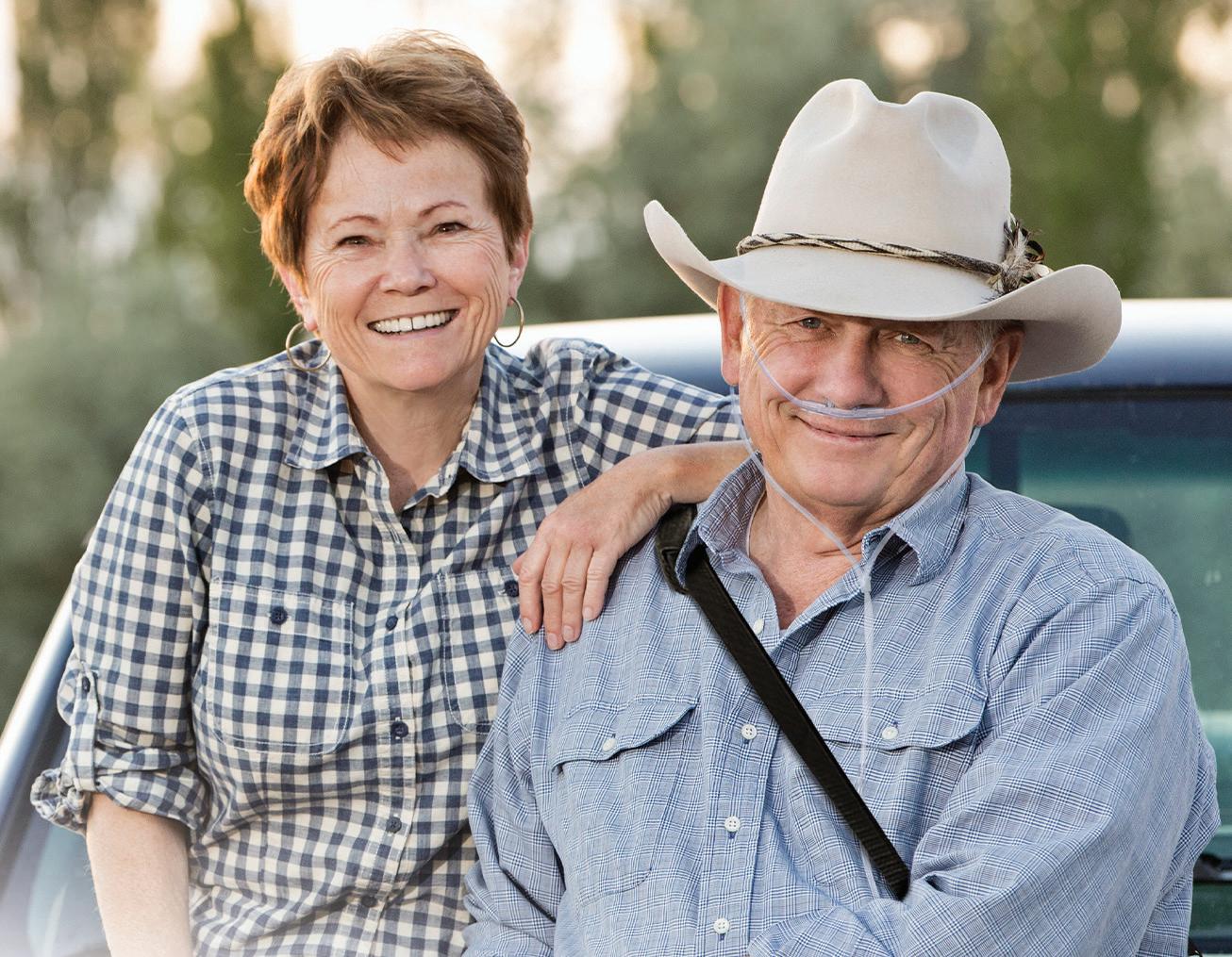
time for a welcome breath of fresh air.
the Inogen One family of portable oxygen systems.


no need for bulky tanks, each concentrator is designed to keep you active via Inogen’s Intelligent Delivery Technology.®

of quiet and consistent oxygen flow




the





 BY JOHN
BY JOHN
a long-lasting
freedom of movement, whether at home


Inogen One meets FAA


freedom


































